|
This post contains Amazon affiliate links. Happy Valentine's Day, dear readers! I'm not typically one for Valentine's Day (although I've written about it here and here), but this year we decided to celebrate a friend's birthday with a Valentine's Day-themed tea party! I will admit the idea started with cute pink tea cups, spoons, and tea bag rests I saw at Target, and it kind of snowballed from there. But if you've been a longtime reader you'll know how much I enjoy designing and putting on tea parties (see: here, here, and here). I have an addiction to vintage dishes and linens, so it only seems fair that I drag them out every now and again. This tea party does not have any particular historical recipes attached to it, although every time I throw one I feel I am following firmly in the footsteps of my home economics predecessors, many of whom enjoyed a themed party even more than I do. Designing Your Tea PartyHalf the fun of throwing parties is dreaming them up and bringing together all the various accoutrements that make it nice. I've mentioned the pink teacups and saucers, golden flower spoons, and heart-shaped tea bag rests already. Those were the catalyst. But I also pulled from my collection of vintage pretties, all of it thrifted: a cherry blossom tablecloth, my favorite lace-edged milk glass platter and coordinating dessert plates, a gold-edged glass platter and coordinating luncheon plates, gold-rimmed etched highball glasses, vintage martini glasses, a beautiful cut glass footed compote I picked up recently, and one of my many milk glass vases for two bunches of fresh tulips. I did splurge on a few more things - I got some cute Valentine's Day decorations; a garland of felt hearts for the living room and a table runner for the coffee table. A set of heart-shaped cookie cutters in a variety of very useful sizes. My favorite purchase was a set of beautiful pink glass nesting bowls rimmed in gold. We only used one bowl for the tea party, but I love them so much. And the one that got the most comments was this rose-shaped ice cube tray, which turned grapefruit juice into gorgeous icy roses. I probably could have used more, but much of my milk glass got put away last Christmas and is now up under the eaves. One of my spring cleaning projects is to organize all my totes of spare dishes and decorations and put them all in the more easily-accessible basement, clearly labeled, so I can find things and use them more often. If you are in search of your own tea party collection, my best advice is to buy what you love, and damn the naysayers. My second-best advice is to buy things that coordinate with a variety of themes. Which is why I love milk glass so much, because it knows no season, and white dishes can always be spruced up with special touches of color. What every tea party needs:
Of course the most important ingredient for a tea party is at least one guest! Tea parties are always better with conversation. Menu planning is also a great deal of fun for me, and I love the challenge of coming up with something new each time I throw a party, alongside tried-and-true recipes. For this party, the tried-and-true recipe was for my Russian-style pie crust, which was used for both the savory pie and the letter cookies. The new was the vegetarian "chorizo," which was a riff on my lentilwurst recipe, and which turned out VERY well! The vegetable flower pie I knew would work in theory, but the execution was more difficult than I expected. If I did it again, I would definitely want a Y-style vegetable peeler like this one for the sweet potatoes. Valentine's Day Tea Party MenuFIRST COURSE: Savory Vegetable Flower Pie Heart Shaped "Chorizo" Sandwiches Hot Pink Salad SECOND COURSE: Strawberry Rhubarb Pie a la Mode Love Letter Cookies Red Fruit Salad BEVERAGES: Ice water Grapefruit Mocktail Cherry Blossom or Valentine's Day Tea Sadly my time these days is far more limited than it used to be, so my dreams of an almond cake with rose petal jam filling, lavender shortbreads, rose meringues, and other tasty treats fell victim to my schedule. Still, although some of these were a struggle, I was delighted in how they turned out. Normally I would make these separate posts, but for you, I'll lump all the recipes into one. The only thing that was store bought was the pie, which was purchased from a local farm who makes the best pies. And since our birthday girl loves pie more than cake, that was her birthday treat, in addition to the homemade ones. Savory Vegetable Flower Pie RecipeThis flavor combination sounds unusual, but it's delicious. Crust: 1 stick butter 1/4 pound fresh ricotta or farmer cheese 1 cup flour Filling: 1 cup ricotta 1/2 cup feta garlic salt dried thyme Topping: sweet potato small shallots roasted red pepper Preheat oven to 350 F. Cream softened butter and ricotta, then stir in 1 cup flour. Knead well and let rest. Whirl the ricotta and feta to blend and then add seasonings. Peel the sweet potato and cut into paper-thin slices. Peel the shallots cut off the tops, and then cut through them lengthwise but not through the root end. Cut multiple times to make "petals." Then trim the root end without cutting all the way through. Roll the dough out thinly and drape in a pie plate. Fill with ricotta filling, then arrange sweet potato slices into roses, add the shallots and spread the "petals," and then fill any extra spaces with slices of roasted red pepper rolled into rosebuds. Trim pie crust and crimp. Use remaining crust to cut out "leaves" and bake separately. Bake pie 30-40 mins or until sweet potatoes and shallots are cooked through and crust is golden brown. Vegetarian Lentil "Chorizo" RecipeThis recipe is a riff off my lentilwurst revelation. It turned out splendidly. 1 cup red lentils 1 1/2 cups water 1/4 cup butter (or olive or coconut oil) 1 small onion 1 red bell pepper 2 teaspoons smoked paprika 1 teaspoon chili powder 1 teaspoon garlic powder 1/2-1 teaspoon garlic salt 1/2 teaspoon oregano 1/4 teaspoon cumin 1/4 teaspoon black pepper Combine the lentils and water in a small stockpot. Bring water to a boil, then reduce heat and simmer 20ish minutes, or until the water is absorbed and the lentils are very soft. Peel the onion and seed the pepper, then mince very finely or whirl in a food processor until finely cut. In a stock pot, melt the butter over medium heat and add the onion and pepper. Cook until the butter is mostly absorbed and the vegetables very tender. Add the spices and lentils and cook to combine. When fully blended, taste and add more salt if needed. To make sandwiches, thinly slice white bread and cut into heart shapes, then spread with the lentil filling. Pink Salad RecipeI like to have something a little lighter for tea parties, usually a salad. But of course for Valentine's Day I didn't want any-old green salad! Plus, one of the challenges I set for myself was to keep this at least partially seasonally-appropriate. So this was my answer. 1/4 head red cabbage 8 red radishes 1/4 cup pickled red onion salt olive oil lemon juice Finely shred the cabbage and slice the radishes paper-thin. Toss with salt and let rest, then add a little olive oil and lemon juice. You can make this in advance if you want it to be extra-pink and slightly less crunchy, but be forewarned that the purple juices will stain just about everything, so eat carefully! Love Letters Cookie RecipeI'll admit - I saw this on Pinterest and thought it was too cute. I used my fool-proof ricotta pie crust instead of traditional butter crust, and while delicious, the letters did puff up a bit in the oven. Plus those little hearts are a pain to cut out by hand! 1 stick (1/4 cup) butter 1/4 pound ricotta or farmer cheese 1 cup flour cherry jam (I like Bonne Maman) Cream butter and ricotta and stir in flour. Knead well until combined. Roll out very thin and cut into squares. Place a teaspoon of jam in the center, then fold up one side and the other two to make an envelope. Add a heart cut out of crust to keep the edges from popping up. Bake at 350 F on parchment paper for 15-18 minutes, or until golden brown. Grapefruit Mocktail RecipeThis is one of my favorite mocktail recipes and it is dead easy, you ready? 1 part grapefruit juice 1 part gingerale And that's it! I like to use Simply Grapefruit, as I think it has a nice balance of sweetness and bitterness, but you could use any kind. The combination tastes so much more sophisticated than it is - not too sweet, not too bitter, not too bubbly, and curiously addictive for the adult palate. For folks who don't drink alcohol, it's a great alternative to a mixed drink that isn't sugary-sweet. Selecting TeasTea parties traditionally feature just black tea, but as a non-traditional person and someone who doesn't enjoy a lot of caffeine, I don't usually drink black tea. However, since this was a special event, I decided to bring out some special teas just for Valentine's Day. Harney & Sons is a New York-based tea producer (and therefore local for me) who makes delicious blends. I did a big order last year around this time and got their "Valentine's Day" blend for free. I was skeptical at first, but it's a delicious blend of black tea, chocolate, rose, and other fruity flavors. Curiously addictive. The birthday girl is a big fan of green tea, so when I saw the Cherry Blossom variety, which is a mix of green tea with cherry and vanilla flavors, I decided to get that as well. Both were excellent and did not need any sweetener or milk to accompany the rest of the menu. All in all it was a delightful afternoon. The birthday girl was happy, the husband was happy, and I was happy! We went for a post-party walk in delightful weather and did a little shopping at a nearby town, got caught in a rainstorm, then headed for home. Later that night we ran some more errands and I treated myself to some adorable jigsaw puzzles, because they remind me of my mom and I need some non-screen time activities! They've been fun, but man my back is not up for too much hovering over a table searching for pieces!
It always gives me joy to built a beautiful table for family and friends. My best Valentine's Day present to myself! How are you celebrating?
1 Comment
In throwing an Autumnal Tea Party (see yesterday's post!), I wanted a simple but impactful dessert. Apples are plentiful in New York in September, but plain apple crisp, while delicious, didn't feel quite special enough for a tea party. The British have a long tradition of gleaning from hedgerows in the fall. Hedgerows often have apple trees, sloes, blackcurrants, and blackberries in fall. Sloes and blackcurrants are hard to find here in the US, but blackberries seemed like the perfect accent to the American classic. This recipe is endlessly adaptable as the crumble topping is great with any kind of fruit. You do need quite a lot of fruit for a crumble, which makes it nice in that it feels a little lighter on the stomach than cake or pie. These sorts of desserts were common in areas where fruit was plentiful and sugar and butter weren't. Apple Blackberry Crumble RecipeI never sweeten the fruit for a crumble (similar to a crisp, but without rolled oats) unless it is a very sour fruit like rhubarb or fresh cranberries. This topping has quite a lot of sugar, which is what helps make it so crunchy and delicious, but you definitely do not need additional sugar in the fruit, especially when pairing with ice cream. You can substitute whole grain flour for part or all of this to good effect as well. If you prefer a crisp, use 1/2 cup of flour and 1 heaping cup of rolled oats. 8+ small apples (I used a mix of gingergold and gala) 1 pint (2 small packages) fresh blackberries 1 1/2 cups all-purpose flour (plus more for the fruit) 1 scant cup white sugar 1/2 cup coldish butter 1/2 teaspoon salt 1/2 teaspoon pumpkin spice Preheat the oven to 400 degrees F. Peel the apples, cut into quarters, cut out the core, and slice. Wash the blackberries and drain. Toss the apples and blackberries with flour to coat (this will thicken the juices). Add to the baking dish. Then make the crumble. Mix the flour, sugar, salt, and pumpkin spice. Then cut the butter into small cubes, toss in the flour mix, and using your hands squeeze and rub it into the flour mix until it holds together when squeezed. Crumble gently over the fruit in an even mix, then bake for 40-50 minutes, or until the fruit is bubbly and thick and the crumble is golden brown. Serve warm with vanilla ice cream. There's nothing like a warm crisp with cold vanilla ice cream, and I think this is my new favorite kind. Blackberries and apples seem like a match made in heaven. What's your favorite autumnal dessert? The Food Historian blog is supported by patrons on Patreon! Patrons help keep blog posts like this one free and available to the public. Join us for awesome members-only content like free digitized cookbooks from my personal collection, e-newsletter, and even snail mail from time to time! Don't like Patreon? Leave a tip! The weather has finally turned, dear readers, and so I felt it was time for another tea party! I've had a long couple of weeks, and I wasn't really looking forward to spending one of my days off cleaning the house and cooking, but it was very much worth the effort and I'm glad we did it. Tea parties can be incredibly complicated, or very simple. My process is to think about the theme, and the flavors, and then come up with way too many ideas and then pare it down to what's possible. I wanted to honor the flavors of early fall, with something pumpkin or squash, apples, blackberries, and a savory bread. My original list also had gingerbread and shortbread cookies with jam, and scotch eggs, but that was too much! I wanted to keep the menu fairly simple, because I was quite sleep deprived after a big event over the weekend at work. So I maximized flavor and minimized effort, to great acclaim! The party (just three of us) ended up delicious, with a chilly, drizzly day with beautiful overcast light on our front porch. Ironically, we ended up having mulled cider, instead of tea, but I'm enjoying a cup of tea as I write this a few hours later, so I suppose it still counts! Autumnal Tea Party DecorIt can be tempting to go out and buy a lot of supplies for parties. I'm definitely as susceptible to that impulse as the next person! But I find what makes parties special is not how much everything matches, but the quality of your decor. I decorated my mantel with some of my favorite fall decorations - a coppery leaf garland, my favorite vintage china pheasant, a pretty vase with some fake flowers, a little green ceramic pumpkin. But when it comes to decking the table, nothing is better than nice tablecloth and real dishes. I grew up shopping thrift stores and garage sales and flea markets with my mom, so I've amassed quite a collection of vintage dishes and tablecloths over the years. Because I actually use my collection, I don't spend a lot of money on it. It pains me enough when a vintage piece gets chipped or broken. My frugal soul would be even more deeply wounded if it was a piece I had spent a lot of money on. This ended up being a very grandmother-focused display. The Metlox California ivy plates and a single surviving teacup I inherited from my grandmother Eunice, along with the green glass bowl I used for butter and the green glass saucers. My grandma Ruby found me the beautiful etched water glasses. The glass teacups embossed with leaves I picked up at a garage sale for a dollar for the pair. The milk glass is from my thrifted collection, and the beautiful tablecloth is a vintage one I forget where I found but it's probably one of my absolute favorites. I did not intend for the food to match the tablecloth, but that's kind of how it happened! When it comes to collecting, it's important to buy things you love, instead of focusing on what things are worth. Who cares how expensive it was if you think it's ugly? It's also important to choose things that are relatively easy to care for. I do not recommend putting vintage dishes in the dishwasher, but a lot of vintage tablecloths are meant to be washed. I find vintage textiles with a stain or two are often much less expensive than the pristine stuff, and then if you get a stain on them you don't feel quite so bad! Autumnal Tea Party MenuButternut Squash Soup with buttered pecans Sage Cream Biscuit Sandwiches with pickled apple, pickled onions, and sharp cheddar Dilly Beans Mulled Cider Blackberry Raspberry Hibiscus Water Apple Blackberry Crumble with vanilla ice cream Although I love to cook from scratch, the butternut squash soup was store-bought from one of my favorite soup brands: Pacific Foods Butternut Squash Soup, and I got the low-sodium version (affiliate link). I don't usually like butternut squash soup, but I know lots of people love it, so I thought I would give it a go. This one was so delicious, I was surprised how much I enjoyed it. I felt it needed a little something extra, so I toasted some chopped pecans in a little butter and salt, and the butter got a little browned. It was the perfect garnish. The blackberry raspberry hibiscus water was also store-bought, a simple cold water infusion from Bigelow tea which I found at the store the other day (affiliate link). It turned out lovely - not as strong as tea, just a hint of flavor to cold water. Very refreshing. Sadly, the color, which was a beautiful purple as it steeped, got diluted to a kind of washed purple-gray, which was less beautiful. But still delicious! Sage Cream BiscuitsI had thought about making scones for this tea party, but I don't have a reliable savory scones recipe, and since I was doing sandwiches, I thought biscuits would be better. This is an adaptation of my tried-and-true Dorie Greenspan cream biscuit recipe. It's almost fool-proof. This one is doubled. 4 cups of all-purpose flour 2 tablespoons baking powder 2 teaspoon sugar 1 1/2 teaspoons salt 1 heaping teaspoon dried sage (not ground) 2 1/2 cups heavy cream Preheat the oven to 425 F. Whisk all the dry ingredients together, and then add the heavy cream, tossing with a fork until most of the flour is absorbed. Knead gently with your hands (don't overwork!), then pour out onto a clean, floured work surface and knead, folding often, until it comes together. Pat into a large rectangle and cut into squares. Place on a parchment-lined baking sheet and bake 15-20 minutes or until golden brown. Serve warm, and to make the sandwiches, split the biscuits, butter them, and add sliced sharp cheddar cheese, a slice of pickled apple, and a few strands of pickled red onion. Top with more cheddar and the other half of the biscuit and devour. Serve with butternut squash and a side of dilly beans and mulled cider. I'll be following up with the recipe the apple blackberry crumble tomorrow, and the recipes for refrigerator dilly beans, pickled apples, and pickled onions will be available to patrons on my Patreon tomorrow as well. Do you like to have tea parties? What's your favorite autumnal food? The Food Historian blog is supported by patrons on Patreon! Patrons help keep blog posts like this one free and available to the public. Join us for awesome members-only content like free digitized cookbooks from my personal collection, e-newsletter, and even snail mail from time to time! Don't like Patreon? Leave a tip! Spring has sprung, with daffodils nodding in the frosty air and trees starting to bud out. So it seemed apt to celebrate with another tea party! Once again, our tiny tea party with just one friend featured all-vegetarian recipes, since said friend is a vegetarian. And also because chicken salad, while delicious, seems lazy when you're looking for something new and interesting to try. This one featured recipes from a new cookbook acquisition, The Lunch Box and Every Kind of Sandwich by Florence Brobeck. My edition was published in 1949, although I believe the original was published sometime in the 1930s. It's also a bright orange library binding without the original dust jacket. So no pretty cover to show off this time! Unlike last time, my ambitious list didn't go QUITE as planned. Adapting historic recipes can be like that. 1940s Spring Tea Party MenuOpen-Faced Radish and Butter Sandwiches on White Open-Faced Cucumber and Cream Cheese Sandwiches on Rye Blue Cheese, Pecan, and Celery Sandwiches on Whole Grain 1940s Whole Wheat Honey Quick Loaf 1940s "Plain Buns" with Butter and Jam Fresh Sugared Strawberries Strawberry Lazy Daisy Cake Walnut Tassies Hot Cocoa Tea with Cream and Sugar The SandwichesRadish and butter sandwiches just scream spring to me, and they're very easy to put together. To make things extra fancy, cut sliced bakery bread (not the squishy kind from the bread aisle - hit the bakery and get peasant, sourdough, brioche, or in a pinch, French or Italian bread) with a cookie or biscuit cutter into rounds. Spread with soft butter, top with thinly sliced radishes, and a sprinkling of salt (I used pink Himalayan). The salt is what makes the radishes look wet, but adds a nice flavor. Open-faced cucumber sandwiches are equally easy. Make a cream cheese spread with softened cream cheese (15 seconds in the microwave does the trick), and thinly sliced scallions and dried dill. You can use jarred garlic or minced sweet onion instead of scallions. Spread it on any kind of rye bread. Top with English (a.k.a. seedless - even though they're not - or burpless) cucumbers. If you're hungry, top with another slice of bread spread with the cream cheese mixture, otherwise serve open-faced (which is prettier and more Scandinavian). If you're going really fancy, use fresh dill in the cream cheese and top each sandwich with a sprig of fresh dill. The little square sandwiches were a mashup of two recipes from the The Lunch Box - "Roquefort Cheese and Celery" and "Pecan and Celery" fillings. I decided to mash them up - literally - into one, slightly more interesting filling. I mixed a quarter pound of very soft blue cheese with about a cup each of diced pecans and finely minced celery, with a splash of Worcestershire sauce. It was a curious mixture. Next time I would probably add cream cheese to temper the blue cheese a little, and maybe add some scallions and/or smoked paprika. But otherwise it was quite nice on squares of thinly sliced whole grain bakery bread. Half the fun of tea sandwiches is the fun and dainty shapes you create. I always find it easier to slice the bread first, and then fill, but some people do it the other way around. Whole Wheat Honey Quick LoafWhen one encounters a recipe entitled "Honey Bread," one expects it to taste of, well, honey. Instead, the spicing of this little quick bread leaves the impression of gingerbread more than honey. Curiously, the recipe also contains no fat. I was skeptical, but aside from an accidental overbaking (which I think dried it out), it turned out fairly decently, if scarcely tasting of honey. I followed this recipe pretty much to the letter. It makes a tall loaf with a springy crumb - not at all the crumbly, moist, cake-like texture we come to associate with most quick breads today. Much more like true bread texture than cake. Here's the original recipe: 2 cups flour (I used white whole wheat) 1 teaspoon baking powder 1 teaspoon soda 1 teaspoon salt 1 teaspoon ground ginger 1/2 teaspoon ground cinnamon 1 egg 1 cup milk 1/2 cup liquid honey Sift the flour and measure it; then sift three times with the dry ingredients (or if you're lazy, just whisk everything together). Beat the egg with the milk, and stir this into the dry ingredients alternately with the honey. Beat and pour into a greased loaf pan. Bake in a moderate oven (350 degrees F.) about forty-five minutes or until done. Tip out of the pan and cool on a rack. Serve with salted butter, honey butter, and/or jam. 1940s "Plain Buns"This recipe is deceptive. The title, "Plain Buns" is not accurate - flavored with lemon zest and currants (I used golden raisins), the flavor was surprisingly strong and delicious. Designed to be used with cake yeast, all I had was rapid rise yeast, so I think they got a little overproofed. I'm going to try making them with active dry yeast again, so I won't comment too much on what I did, and just give you the original recipe: 1 cup scalded milk 1 tablespoon sugar 1 yeast cake 1 cup flour 2/3 teaspoon salt 1/4 cup butter or margarine 1 tablespoon lard or shortening 1/4 cup sugar 1/2 lemon, grated rind 1 cup seedless raisins or currants (I used golden raisins) 2 or more cups flour 1 egg yolk Scald the milk, add the sugar to it and, when it has cooled to lukewarm, add the yeast cake broken into small pieces. Cover this and let it stand twenty minutes. Then stir in one cup of sifted flour mixed with the salt. Cover and let this rise until light. Work the butter and lard together until creamy, add gradually the sugar, then the lemon rind. Combine with the first mixture, add the sifted flour (about one and one-half cups) to make a stiff sponge. Beat it well. Cover and let it rise again. Then add chopped raisins or currants and enough more sifted flour to make a soft dough. Cover and let rise again. Then pull off pieces and shape into large rolls. Arrange on a greased baking sheet one inch apart, cover them, and let rise again. Then brush them over with egg yolk, diluted with one teaspoon of water. Bake in a moderately hot oven (375 degrees F.) twenty minutes. This makes twenty to twenty-four buns. Obviously I didn't let rapid rise yeast go through fours separate rises! But I think it still overproofed a bit. I also forgot the egg wash! Which meant the buns looked a bit more like rocks. But they sure tasted good, and that's what mattered. If you enjoy the citrusy flavor of hot crossed buns, you'll love these. Strawberry Lazy Daisy Cake & Walnut TassiesI've made Strawberry Lazy Daisy Cake before, but this time I was somehow out of coconut, so I used chopped pecans for the topping as chopped nuts are the other traditional topping ingredient. Not QUITE as good as the coconut, but still yummy. Sadly for you, I did not make the walnut tassies (my friend did), and thus cannot share the recipe. However, she, like I did, had to make some substitutions! For Walnut Tassies are supposed to be Pecan Tassies, but my friend was out of pecans, so walnuts it was. The original recipe is supposed to be like tiny pecan pies, but tiny walnut pies were equally good. One of the primary joys of tea parties, of course, is in the dishes. I've got my vintage Fire King Azurite Charm teacups and saucers, with newly acquired luncheon plates, some milk glass compotes with sugared strawberries in them, milk glass D ring mugs for cocoa, and assortment of vintage servingware in springy shades, on a vintage floral tablecloth. With tulips in the middle, of course. If you missed the last spring tea party, you can check it out here, with a promise of more to come! Have you had a tea party recently? What favorite food did you feature? Tell us in the comments! The Food Historian blog is supported by patrons on Patreon! Patrons help keep blog posts like this one free and available to the public. Join us for awesome members-only content like free digitized cookbooks from my personal collection, e-newsletter, and even snail mail from time to time!
Thanks to everyone who joined us for Food History Happy Hour tonight! We made a version of "Fruit Punch" from 1924, doctored with some spiced rum. We also discussed the history of tea, coffee, and hot chocolate, the use of tea in 18th century punch recipes and in the Temperance movement, the influence of coffee houses on politics and science, the gendering of these drinks, and the difference between high tea, low tea, and afternoon tea.
Old Fashioned Fruit Punch (1924)
We often think of fruit punch today as the bright red sugary concoction of questionable flavor profile. Historically, fruit punches were non-alcoholic alternatives to highly alcoholic party punches popular in the 18th century. This version was probably inspired by Philadelphia Fish House Punch, a heady mix of citrus fruit, rum, brandy, cognac, and black tea. Here's the original recipe:
1 cup sugar 1 cup very strong tea 3/4 cup orange juice 1/3 cup lemon juice 1 pint ginger-ale 1 pint apollinaris (seltzer/club soda) This makes about 10 glasses. Here's the lovely alternative I made 1/2 cup sugar (this was VERY sweet, feel free to cut it to 1/4 cup) 1 cup very strong tea juice of 2 oranges juice of 1 lemon 1 cup ginger ale 1 cup seltzer 1/2 cup spiced rum Stir tea and sugar together over ice, then and the other ingredients and stir to combine. Serve cold in small cups. This is very good and very smooth. You could easily leave out the rum for a more Temperance-friendly non-alcoholic punch, or you can see other alternative punches, along with a history of Temperance, here. Next weekend I'm going to have another tea party, but in the meantime you can review the one from last weekend! So fun.
The Food Historian blog is supported by patrons on Patreon! Patrons help keep blog posts like this one free and available to the public. Join us for awesome members-only content like free digitized cookbooks from my personal collection, e-newsletter, and even snail mail from time to time!
I love winter, don't get me wrong, and the frequent snowstorms and squalls we've been having here in New York have actually lifted my spirits more often than not. I vastly prefer fluffy white snow and prettily iced trees to muddy brown landscape and grey days. That being said, sometimes you just need to brighten your day, and this was exactly the little escape I needed. I spent the morning cooking and baking, a friend brought cookies and tulips, and we sat down to a delightful tea party, complete with my new favorite electric tea kettle. It was an excuse also to use some of my extensive collection of vintage glassware. I didn't match, but that was okay. Who can say no to hobnail compote dishes and Charm teacups?
Vegetarian Spring Tea Party Menu
Deviled Eggs
Lentilwurst Sandwiches with Mustard on Pumpernickel Cucumber Sandwiches With Herbed Cream Cheese on White Ruby Red Grapefruit Sections in Light Syrup Oatmeal Nutmeg Scones Citrus Yogurt Olive Oil Cake Chocolate Chip Cookies Hot Cocoa Assorted Tea with Cream and Sugar
I seriously considered making Earl Grey madeleines, and maybe cream biscuits with assorted jams, but with only three of us, this was plenty. We remarked on the funny thing about tea parties is that everything is fairly small, so it doesn't seem like much food, but it certainly fills you up quickly!
The menu was fairly easy. Our friend brought the cookies, the grapefruit was pre-sectioned from the refrigerated produce section of the grocery store. The most involved recipe was the citrus yogurt olive oil cake, which was okay, but not as nice as I had hoped, so I'm not going to include the recipe here. I made this tea party vegetarian in part because our friend is vegetarian, but also because vegetarian food just seems a bit lighter and more appropriate for a tea party. You can satisfy even the heartiest appetite with lentilwurst sandwiches - the mushroom/lentil mixture really does smell and even taste like sausage, thanks to the mix of herbs and spices. I first made lentilwurst back for our White Christmas themed party, and I've made it several times since. Cucumber Sandwiches
What is a tea party without cucumber sandwiches? I went extra-fancy here and cut rounds out of the centers of soft white sandwich bread (the bakery kind, not the pre-sliced kind). Frankly, it didn't make a lot of rounds, so I left these open-faced. I'm saving the outer scraps for bread pudding later this week. The rest of the recipe is simple. You'll need:
1 package neufchatel cream cheese 2 scallions dried dill weed a tablespoon or two of milk, cream, or buttermilk 1 English (or burpless/seedless) cucumber white bread rounds Soften the cream cheese at room temperature. Thinly slice the scallions, white and green parts, and add to the cream cheese with the dill weed and liquid. With a fork, mash the lot together until well mixed. Spread onto the rounds of bread and top with thin slices of cucumber. If you want to be extra fancy, you could garnish with fresh dill or chives. The bread will dry out as you let it sit out, so try to do these sandwiches at the last minute, or cover and refrigerate them. Deviled Eggs Recipe
Deviled eggs are one of my favorites, but I find most deviled eggs that other people make to be rubbery and bland. There are three tricks to deviled eggs - don't overcook the eggs, boil the eggs the same day you plan to serve them, and make the yolk filling smooth, creamy, and generous.
12 large eggs 1/4 cup mayonnaise 1/4 cup sour cream 2 tablespoons Dijon mustard In a large pot, cover your eggs with cold water by several inches. Bring pot of cold water to a boil over high heat and let boil for 1-2 minutes. Then turn off heat, set a timer for 15 minutes, and let eggs continue to cook as the water slowly cools down. When the 15 minutes are up, remove the eggs to a bowl of ice water to stop cooking and cool down. Peel the eggs (crack them under water for easiest peeling), halve them, and remove the yolks. With a fork, mash the yolks finely until there are no chunks left and the yolk mixture is powdery. Then add 2 tablespoons Dijon mustard, and 1/4 cup each mayo and sour cream. Mix well. If the mixture seems dry, add another spoonful of mayo and sour cream, until the yolk mixture is fluffy, but not runny. Fill the eggs generously, in the hollow left by the yolk and pile some more on top. I just use a spoon and dollop, but you can fill a pastry bag or a plastic sandwich bag with the end cut off if you want something a little more polished-looking. If desired, garnish with paprika, black pepper, and/or chopped chives, but I like mine plain. Keep cool until ready to serve, and watch them fly off the tray. Oatmeal Nutmeg Scones
Scones are another essential part of a tea party. These are my absolute favorite recipe, straight from the eminent Dorie Greenspan. I didn't make too many changes, except halfway through the recipe I realized I only had room temperature butter. Thankfully, my husband reminded me of the several pounds of butter in our chest freezer, so instead of cutting in cold butter like the recipe calls for, I grated frozen butter and mixed that in, which worked well. These scones have a nutty, toasty, nutmeg-y flavor and using fresh-grated nutmeg really makes a difference, although you shouldn't use quite as much as pre-ground nutmeg
1 egg 1/2 cup cold buttermilk 1 2/3 cup all-purpose flour (I used white whole wheat) 1 1/3 cup old fashioned rolled oats 1/3 cup sugar 1 tablespoon baking powder 1/2 teaspoon baking soda 1/2 teaspoon salt 1/4 teaspoon nutmeg 10 tablespoons cold, unsalted butter (1 stick, plus 2 tablespoons) Preheat the oven to 400 F. In a small bowl, whisk together the egg and oatmeal. In a larger bowl, whisk all dry ingredients together, than cut in butter (or used grated frozen butter). Add egg mixture and toss with a fork until mostly combined. Knead a few times until the remaining flour is absorbed, then pat into a round and cut into wedges. Bake 20-22 minutes or until golden. Cool for a few minutes before serving. Serve warm with plenty of salted butter. Perfect Tea
The one lovely thing about using an electric kettle for tea is you can have the kettle right at the table, which is what we did. Cooking at table with electric appliances was common in the 1930s and '40s, especially at breakfast. It was fun to be able to recreate that fashion today! Plus, being able to reheat the water right at the table certainly made a difference in refills.
In all, this teensy little party was super fun, and I'm definitely having a tea party again! Something about getting out the fancy dishes, fresh flowers, a candle or two, an assortment of tempting little treats, and plenty of hot tea makes everything better. Plus I have plenty of other recipes to share. So many, in fact, I'm considering writing a little tea party cookbook. Would you be interested if I did?
Have you ever had a tea party? Do you have favorite tea cups and dishes? Tell us in the comments!
The Food Historian blog is supported by patrons on Patreon! Patrons help keep blog posts like this one free and available to the public. Join us for awesome members-only content like free digitized cookbooks from my personal collection, e-newsletter, and even snail mail from time to time!
|
AuthorSarah Wassberg Johnson has an MA in Public History from the University at Albany and studies early 20th century food history. Archives
July 2024
Categories
All
|
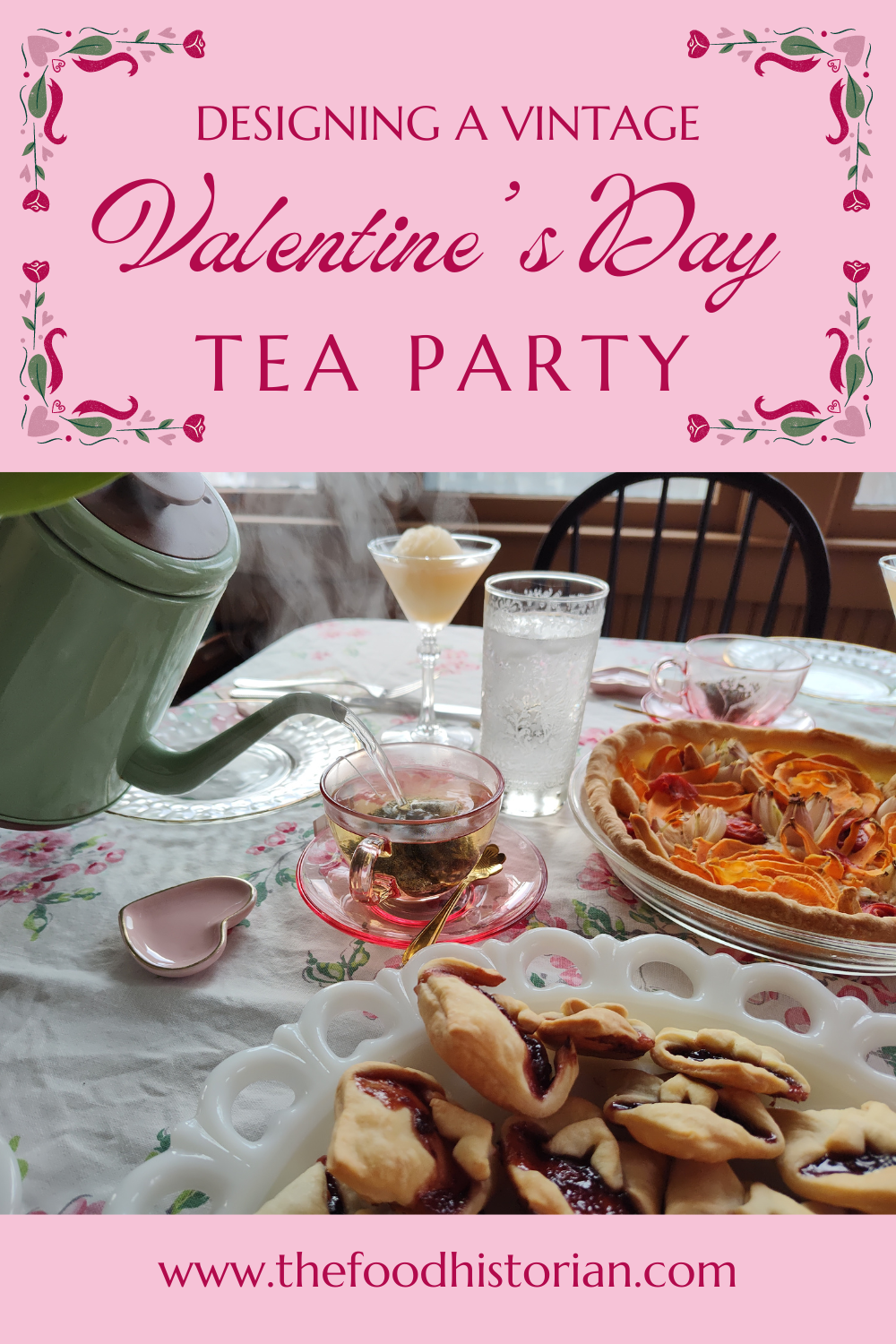


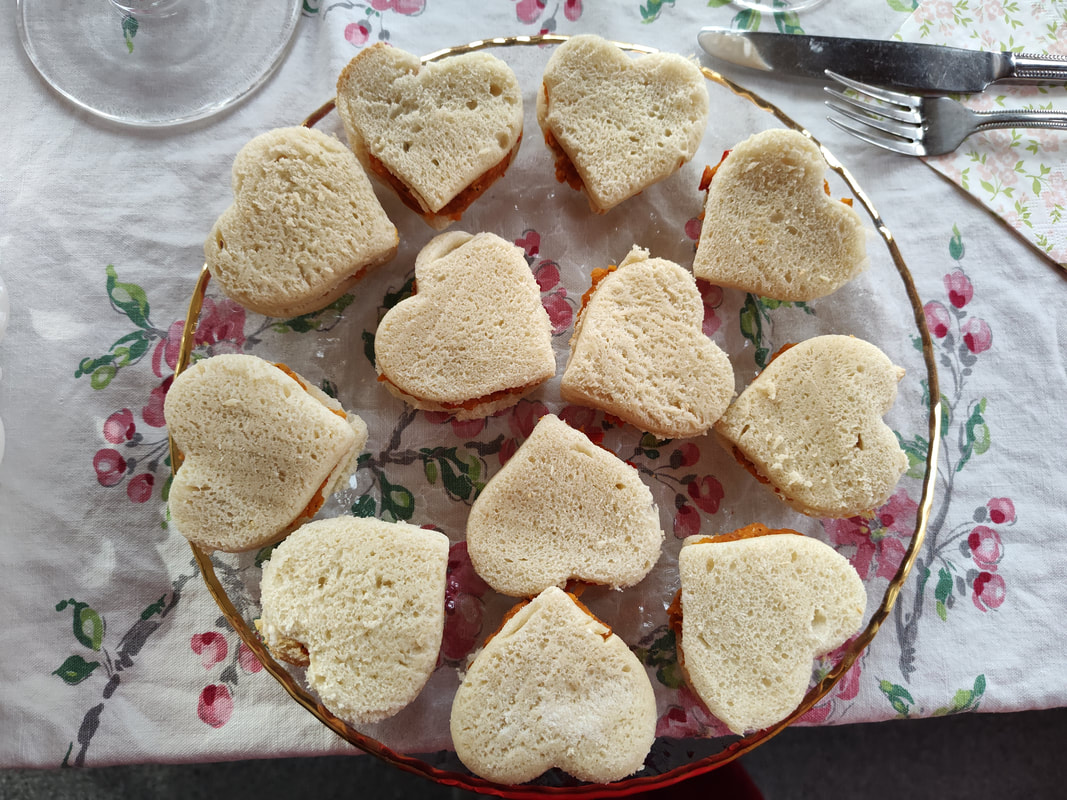
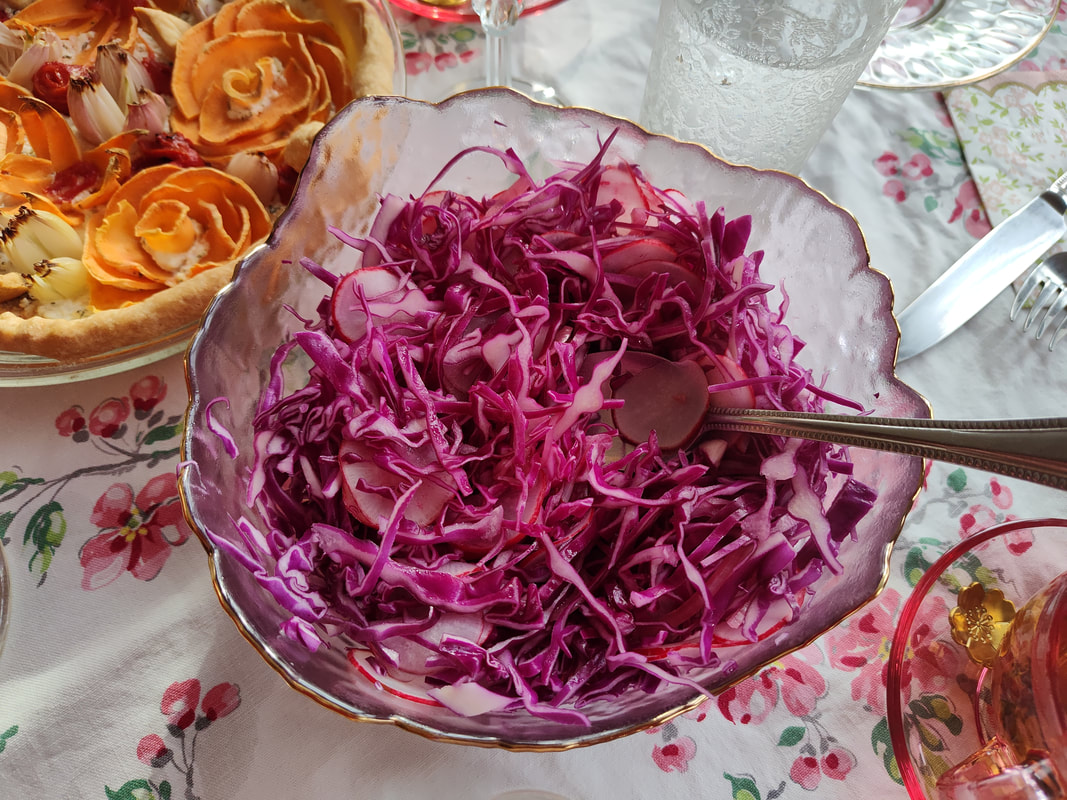

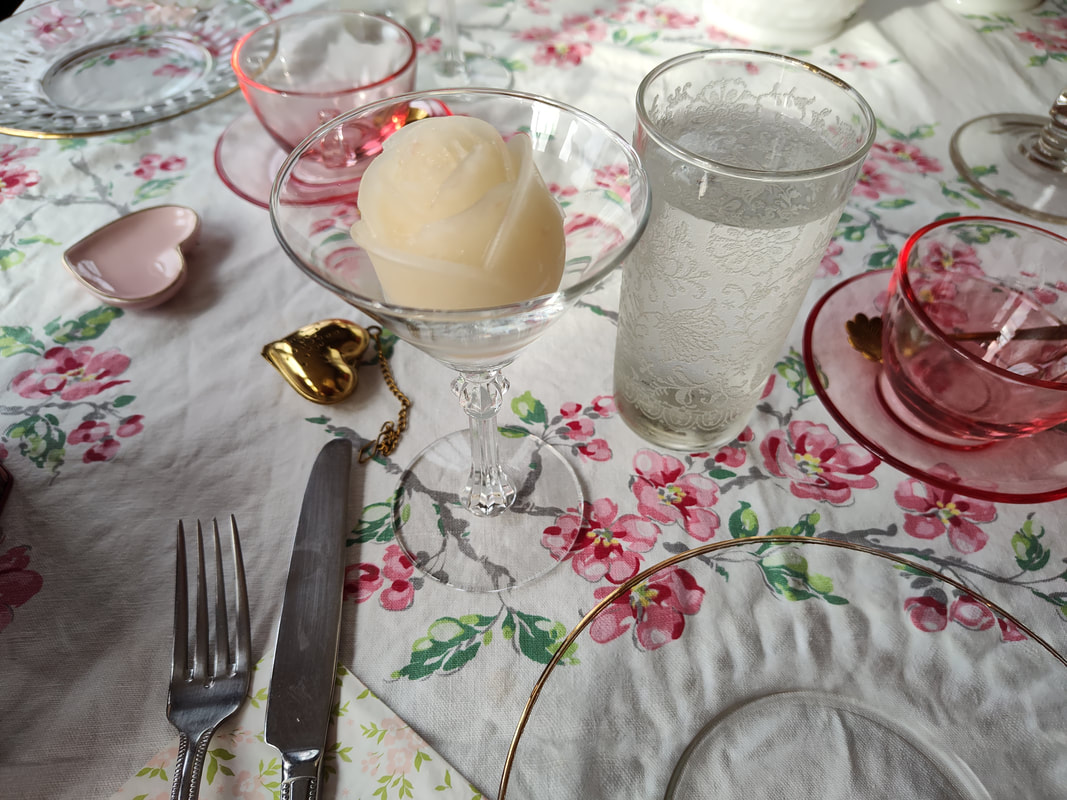


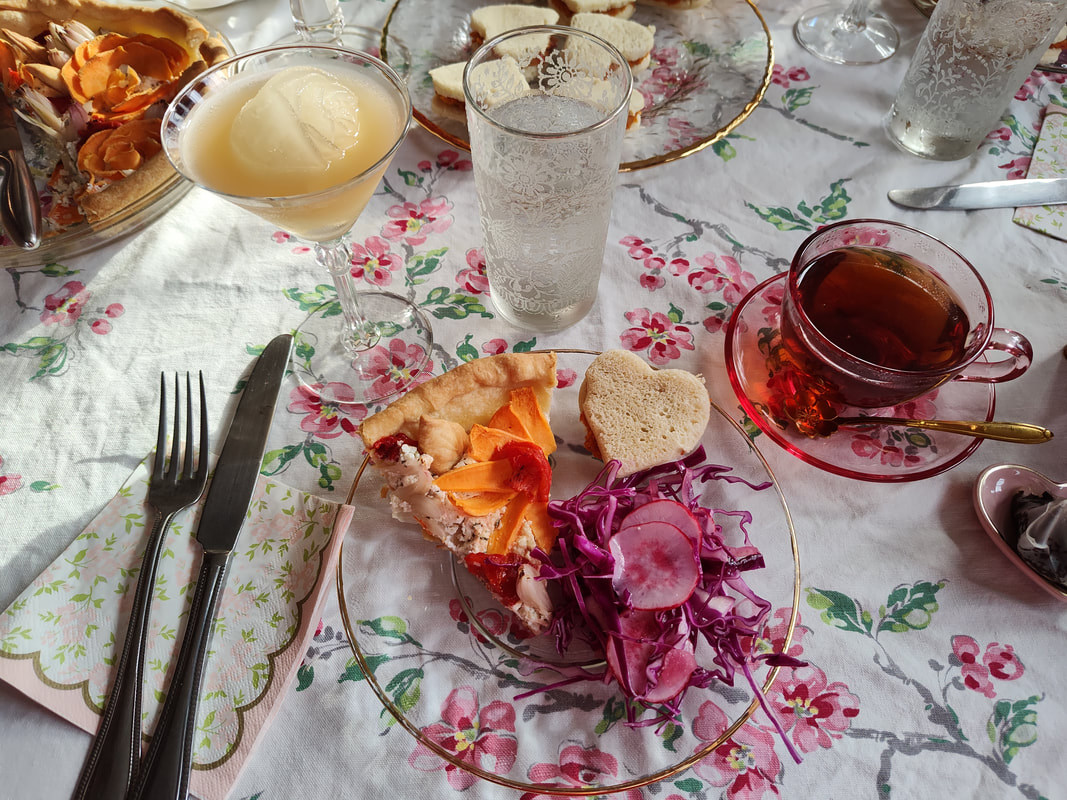
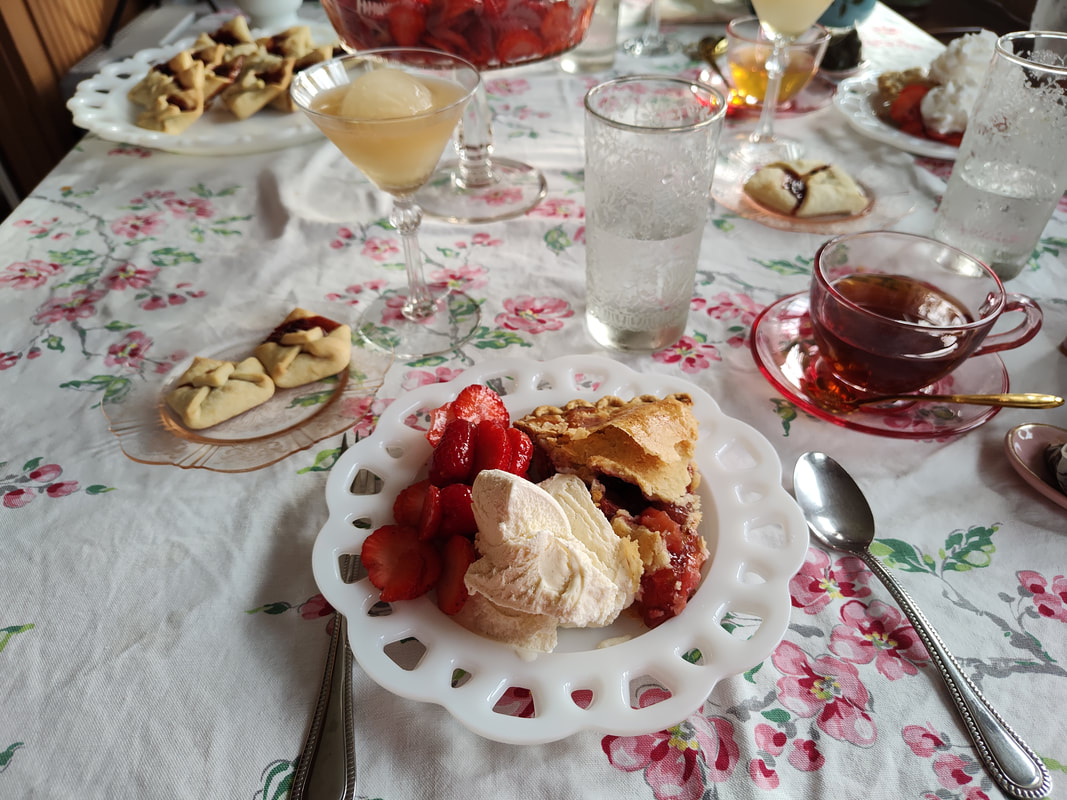
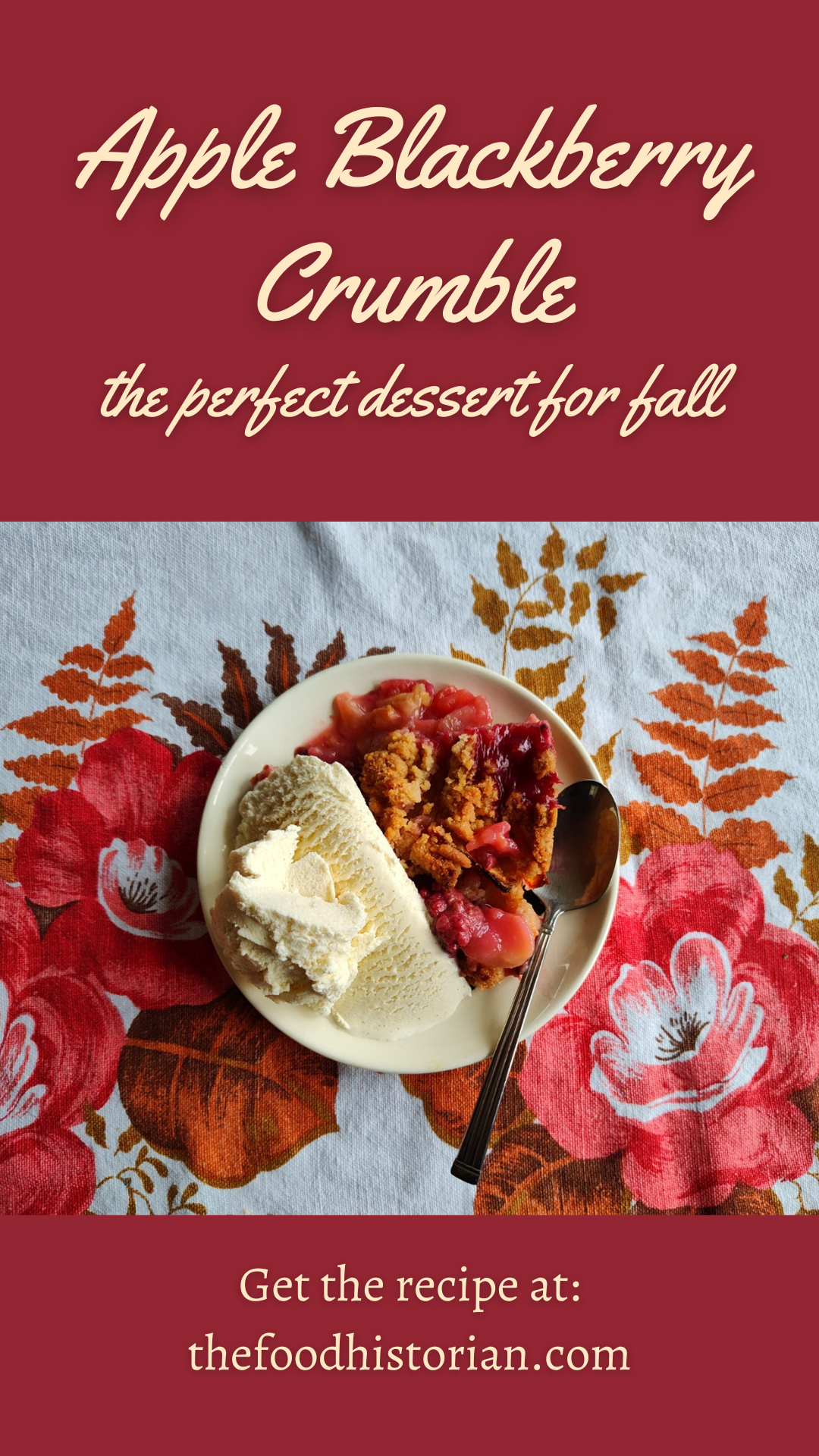
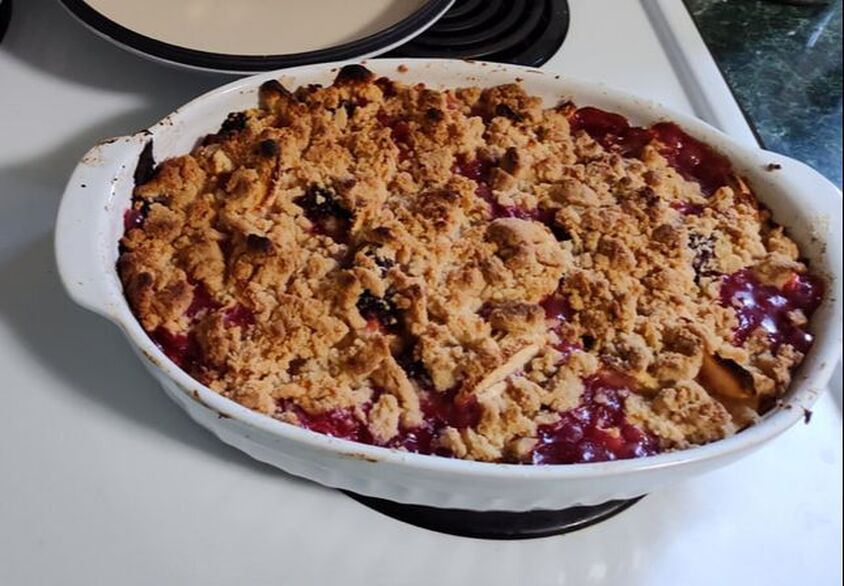



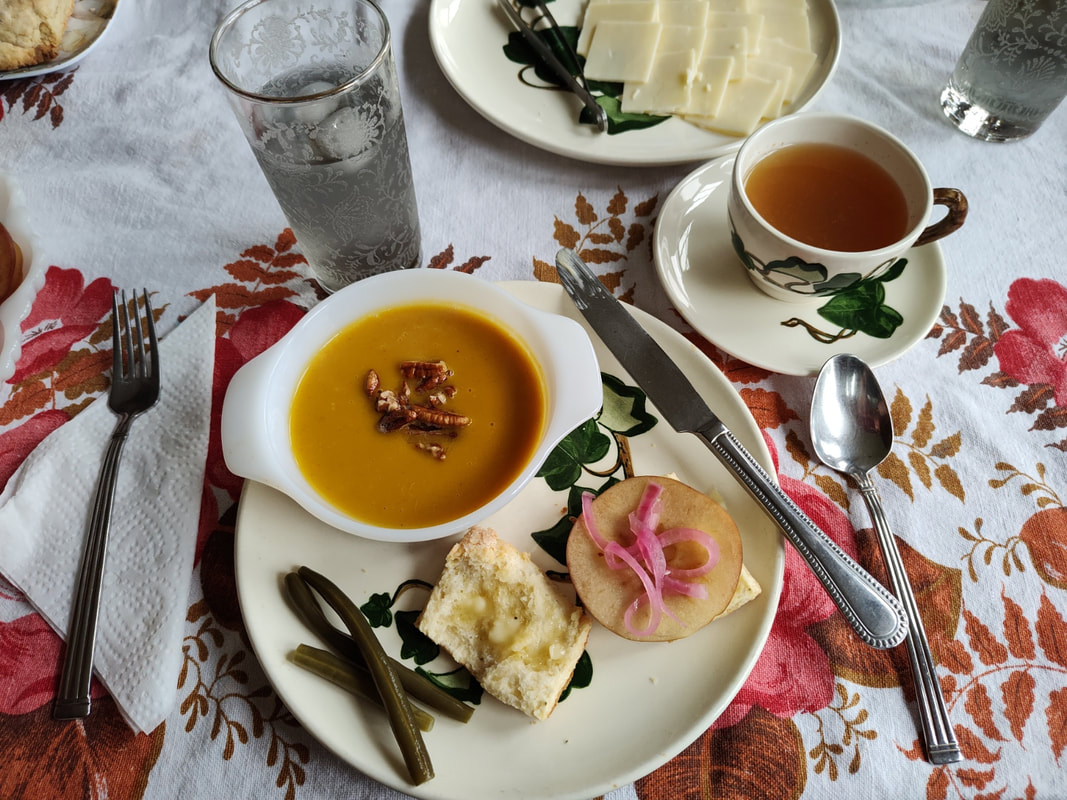
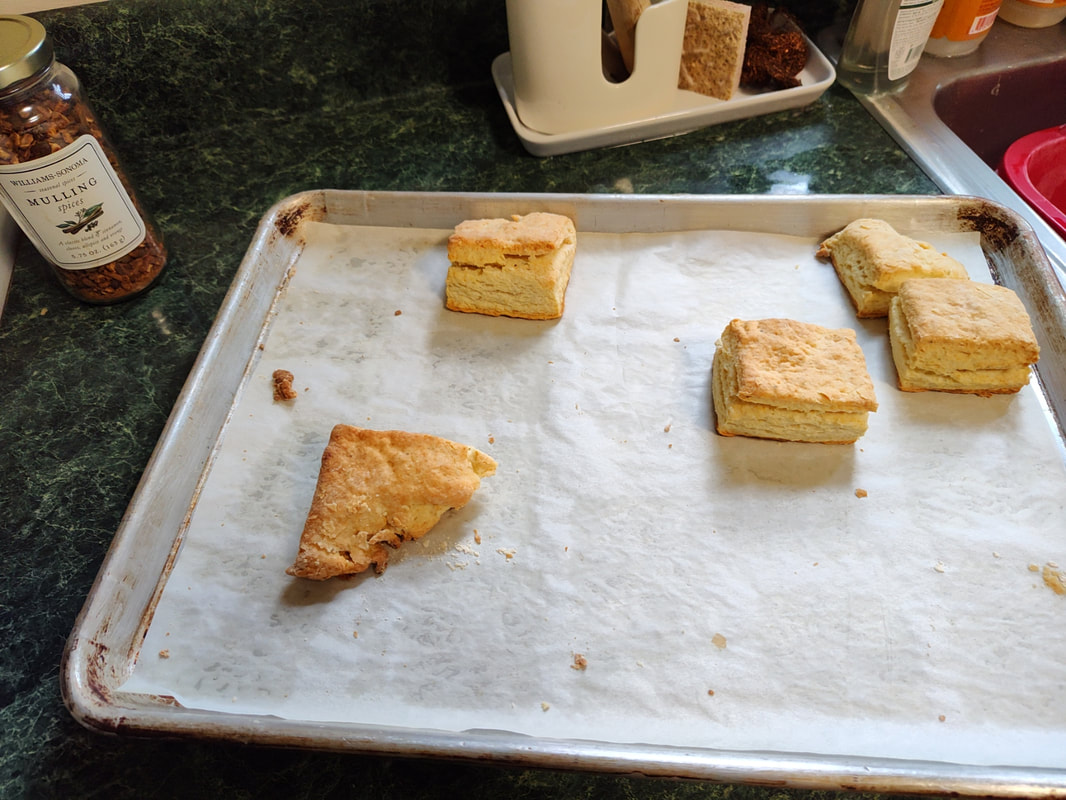
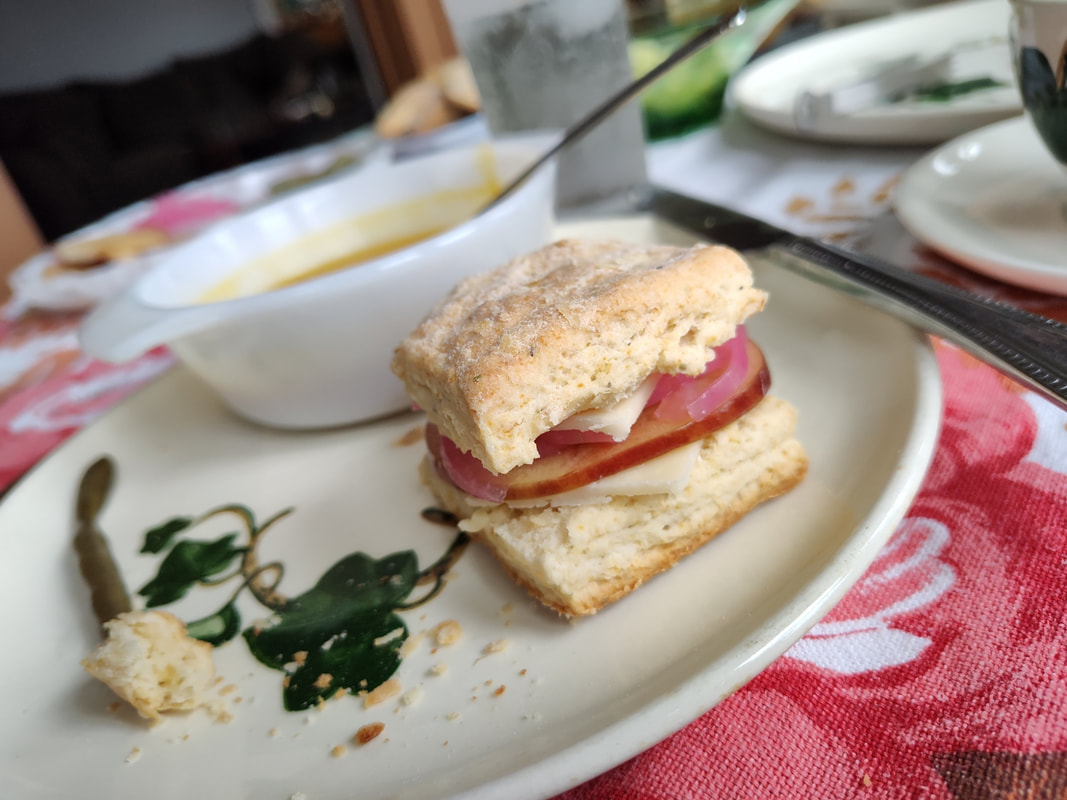

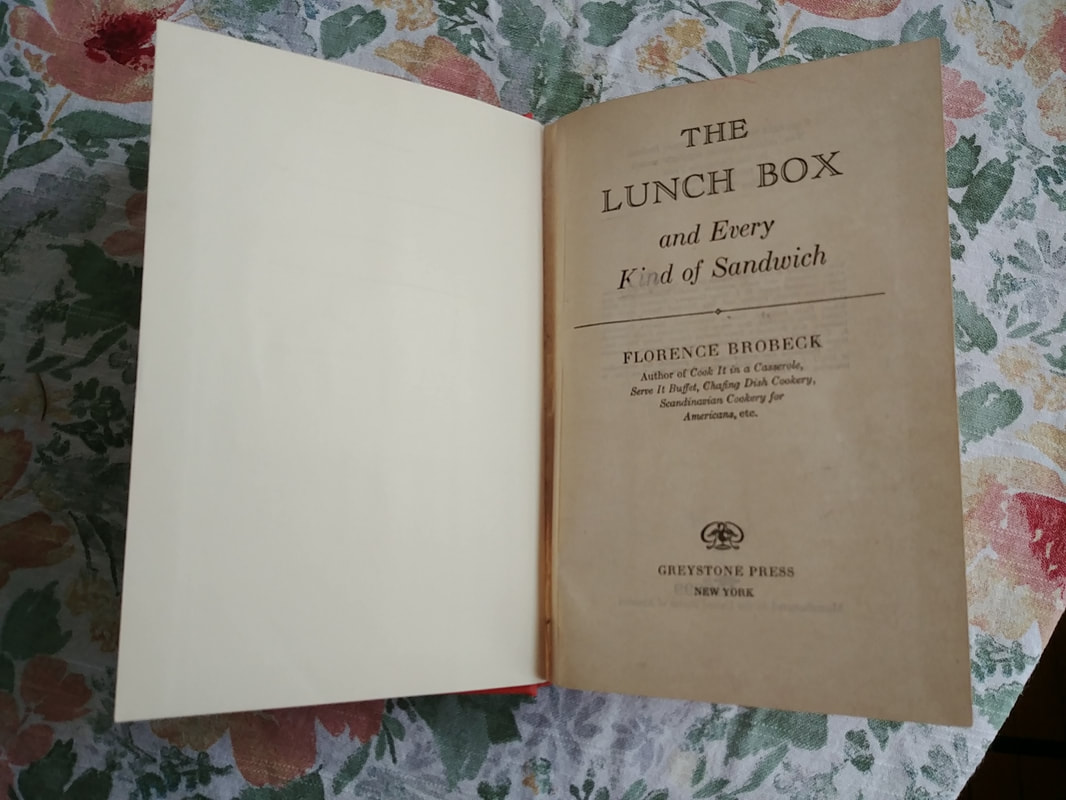
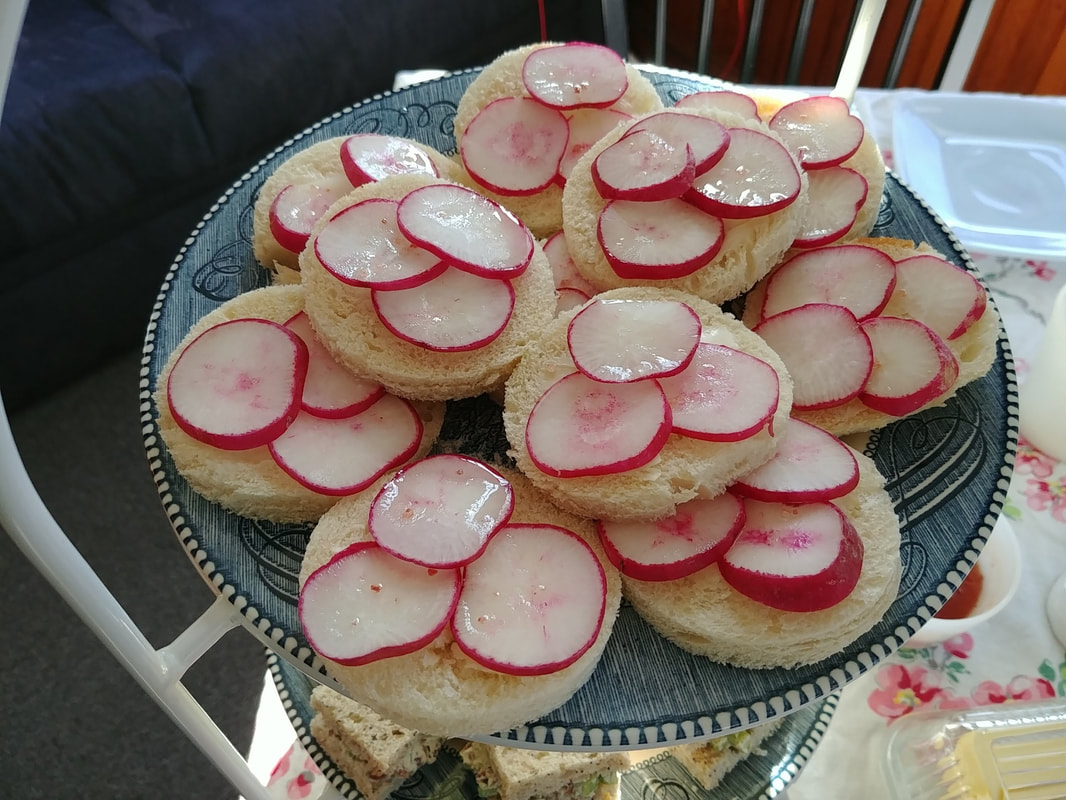
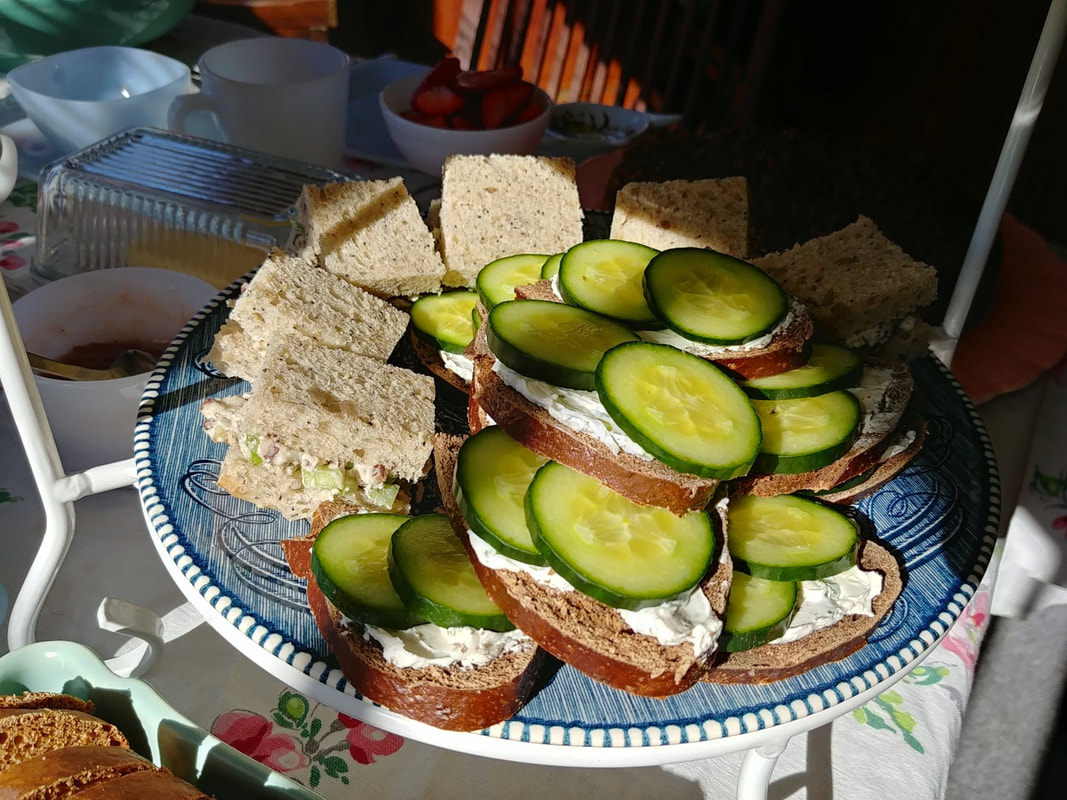
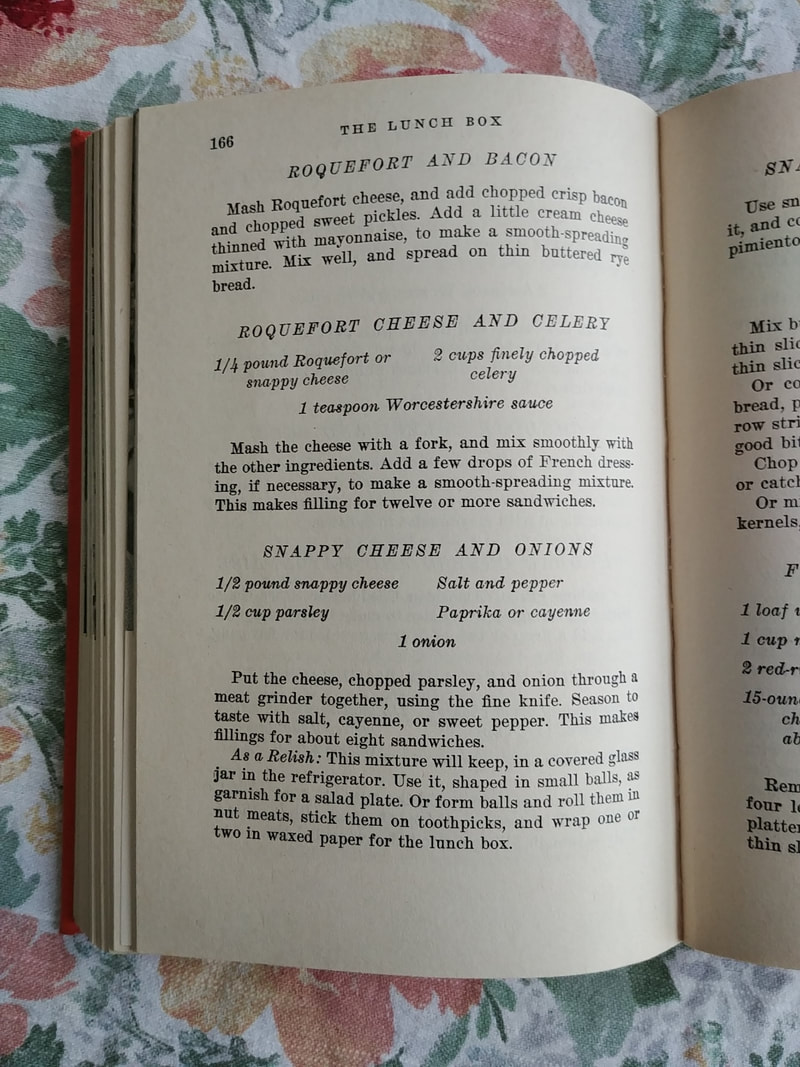
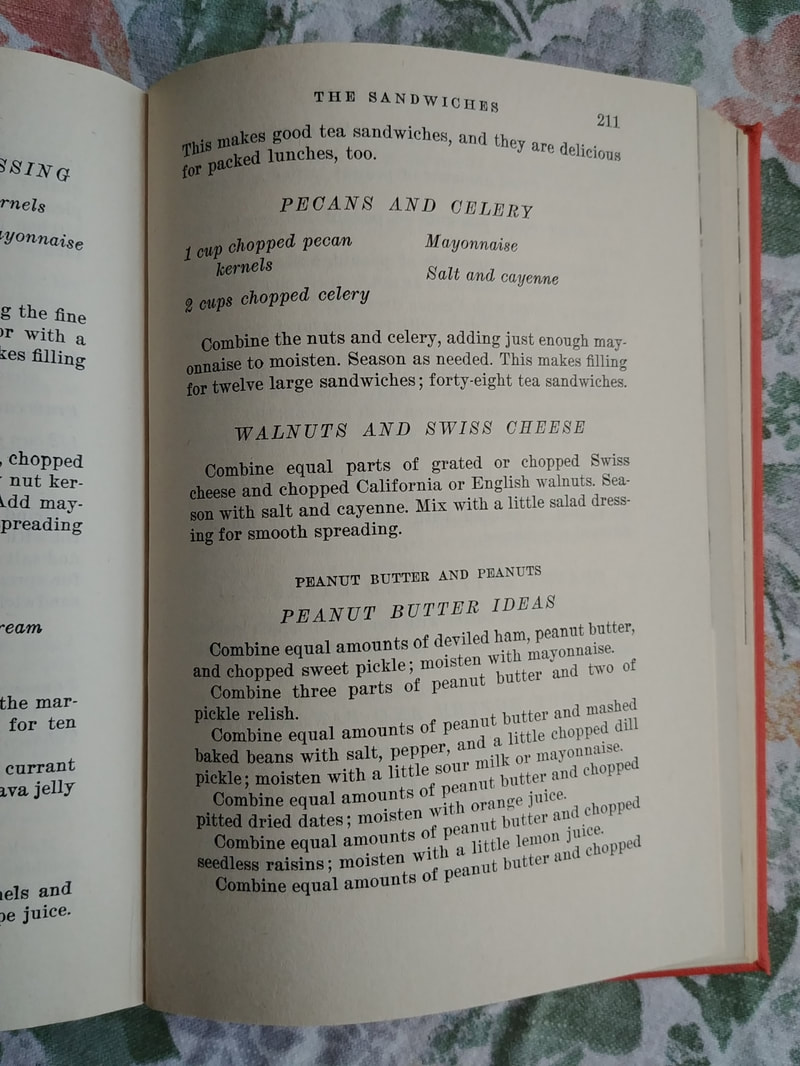


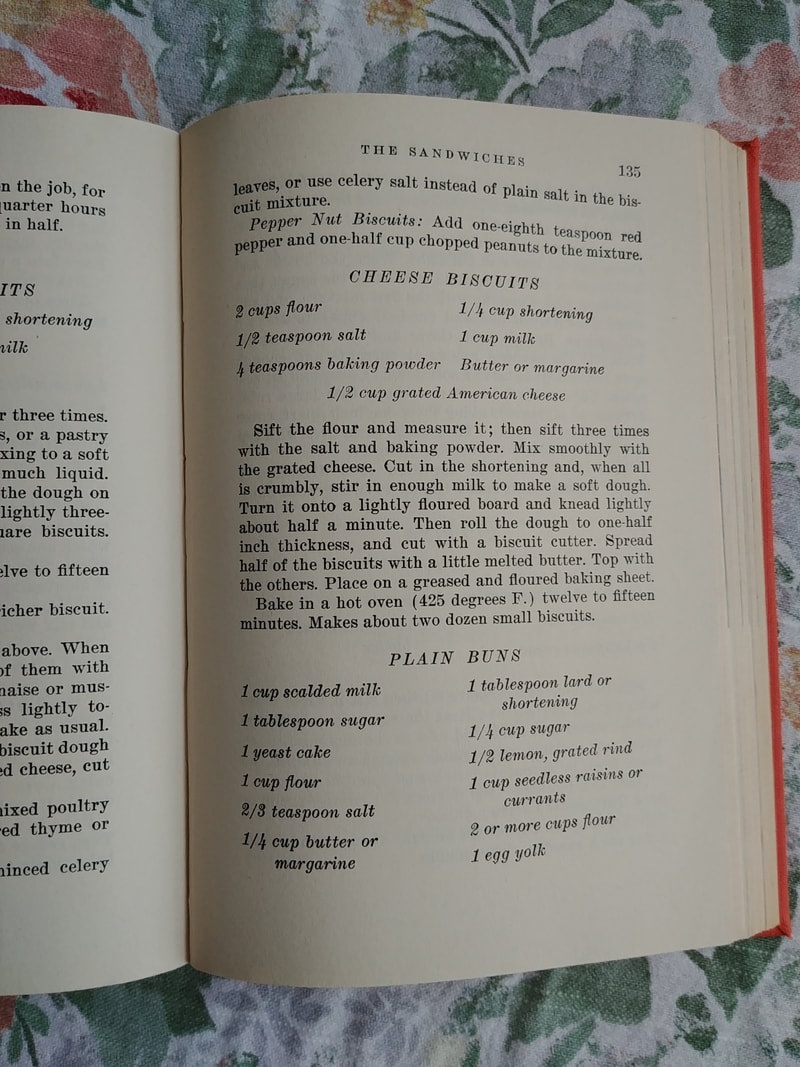
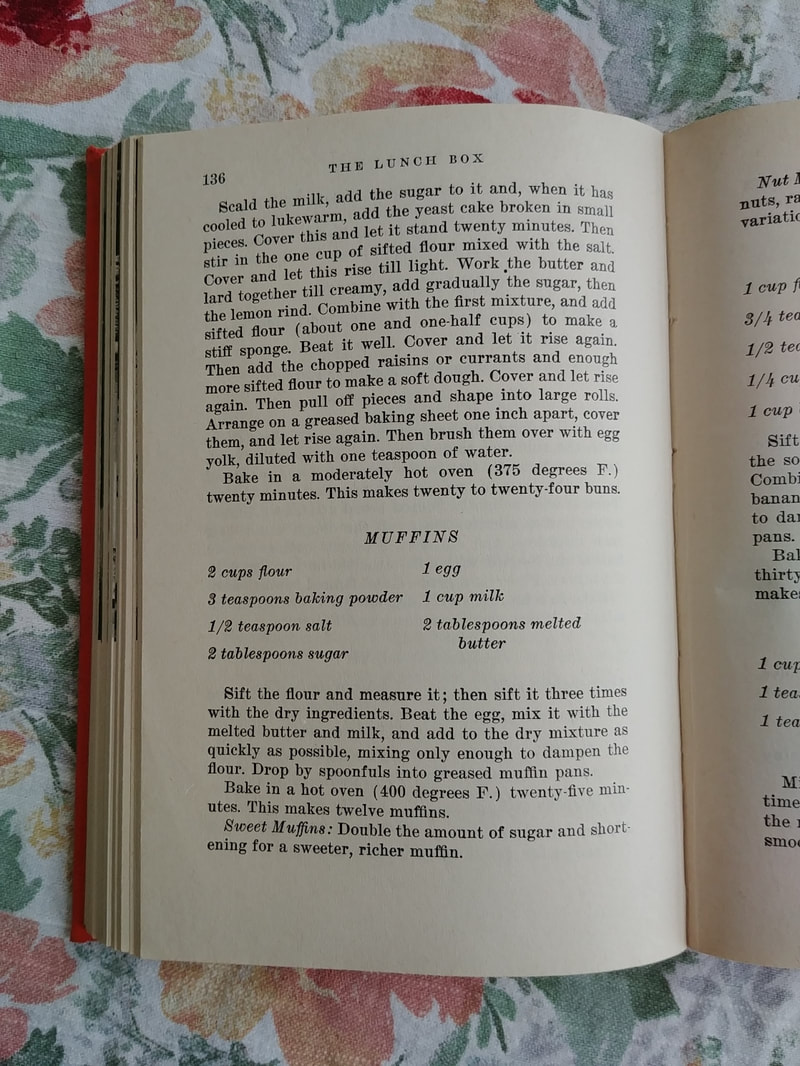
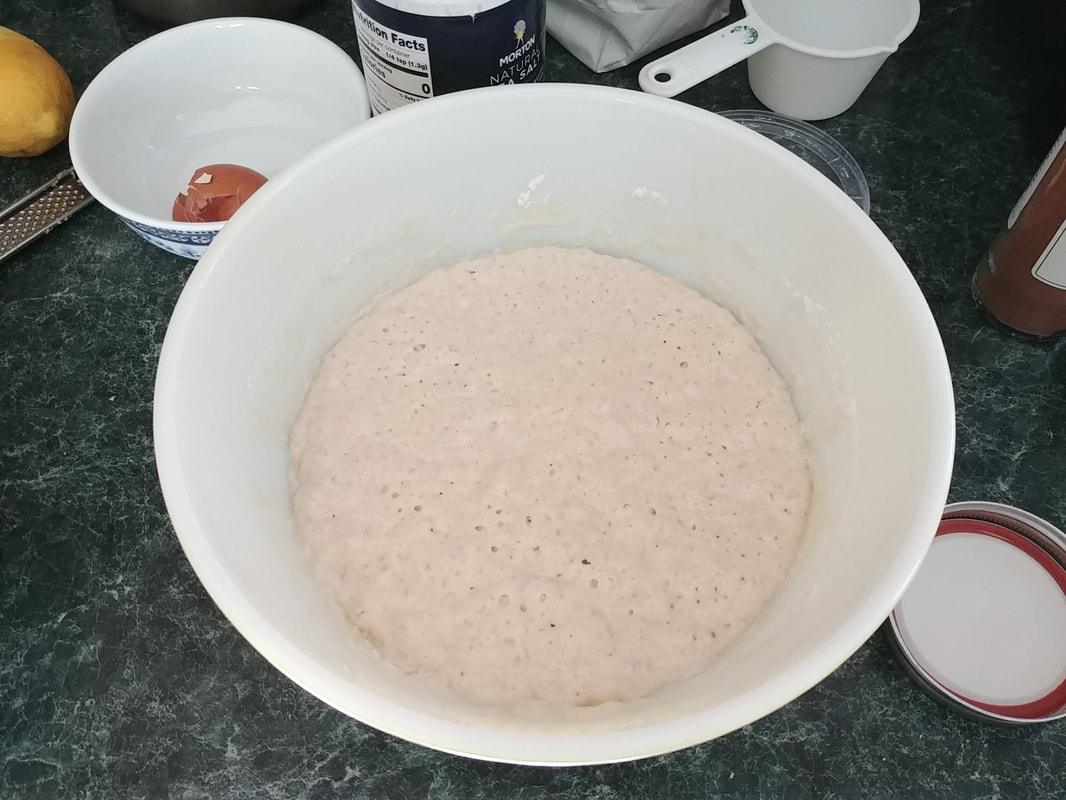
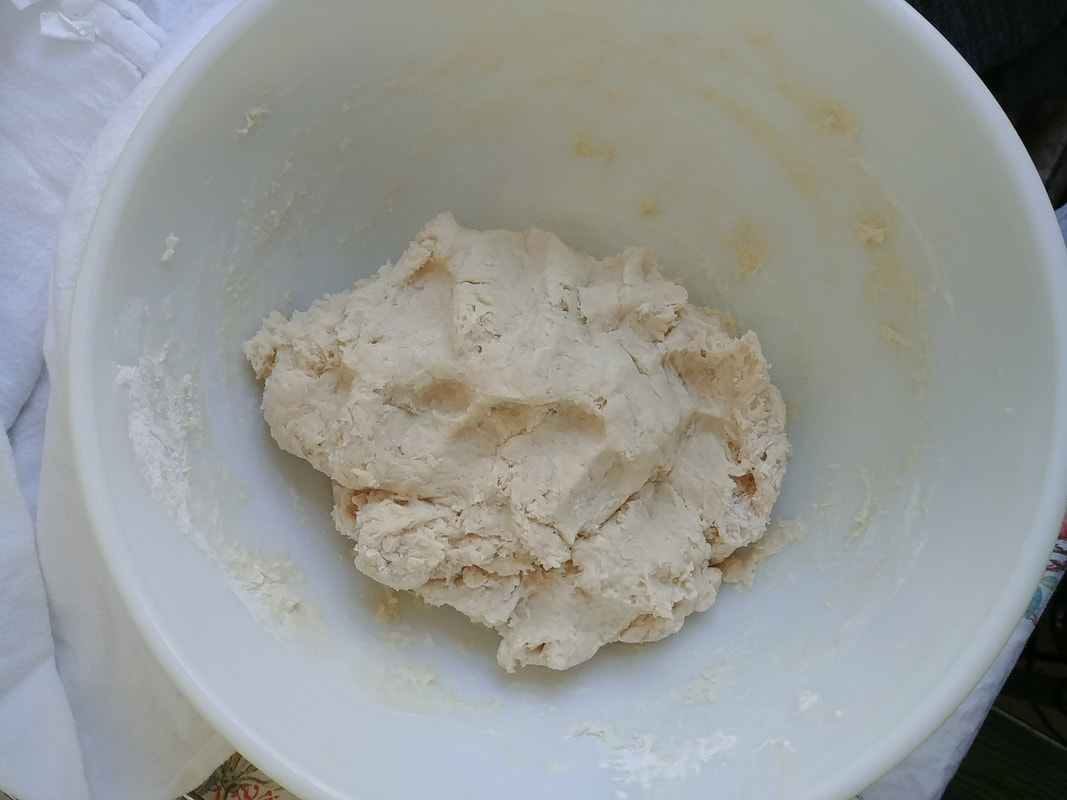
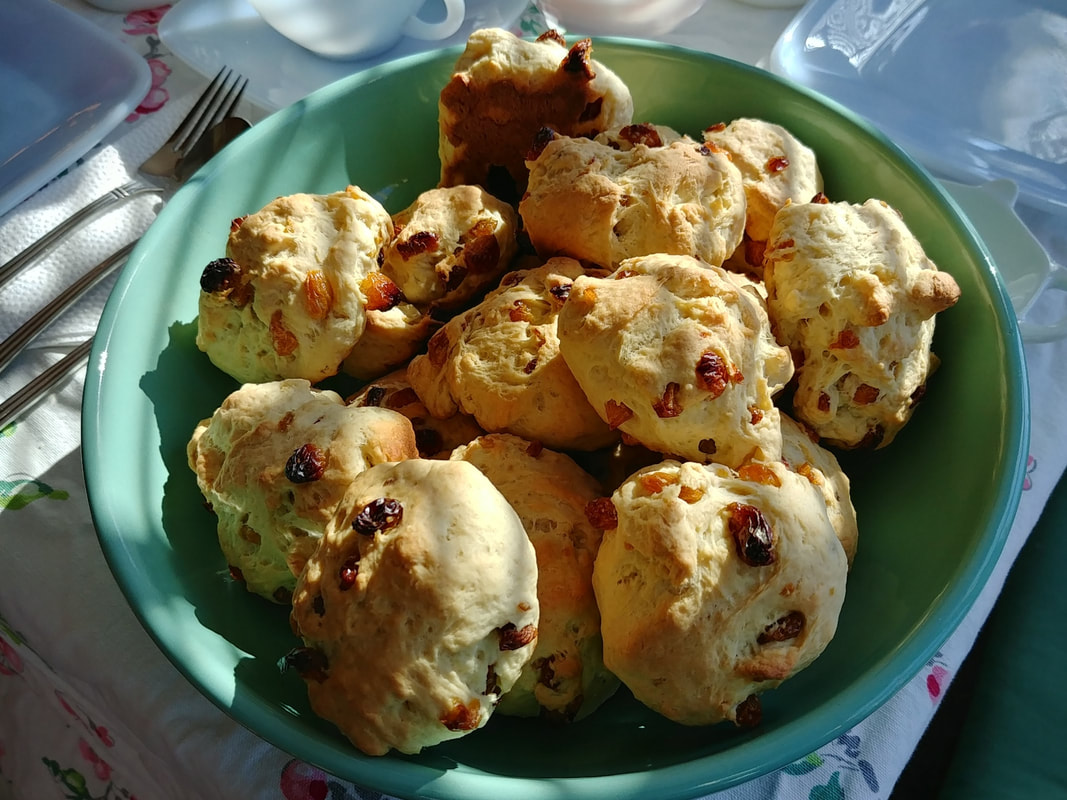
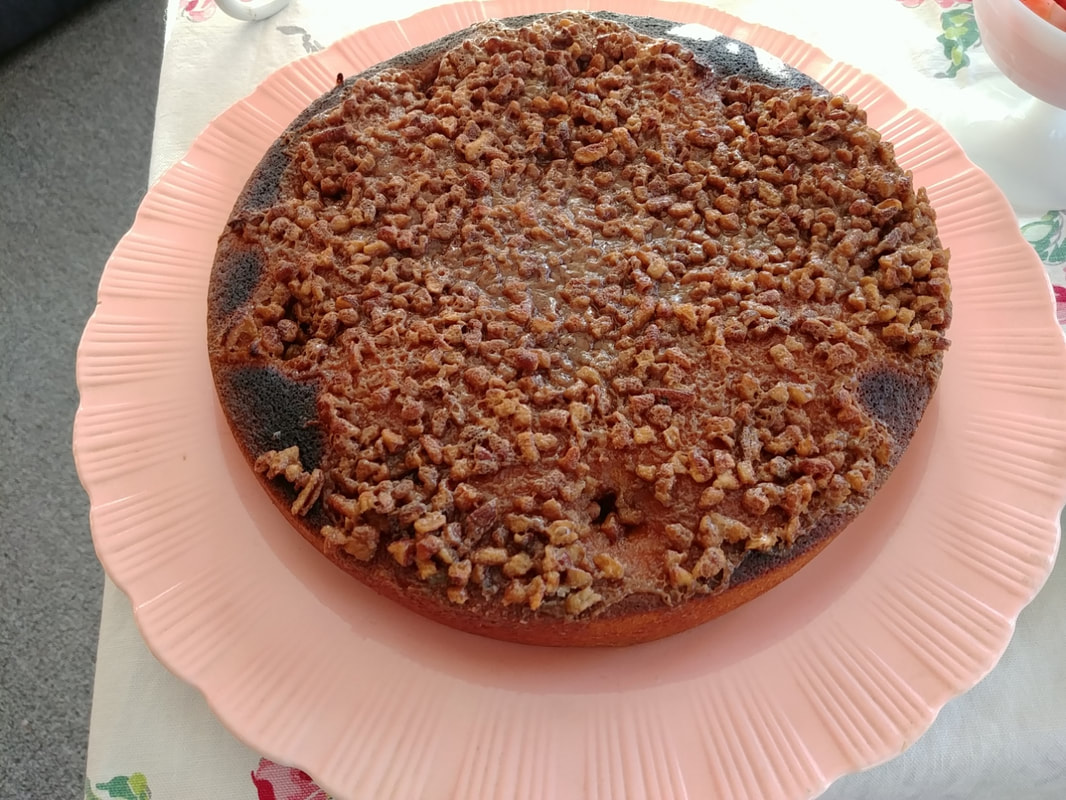
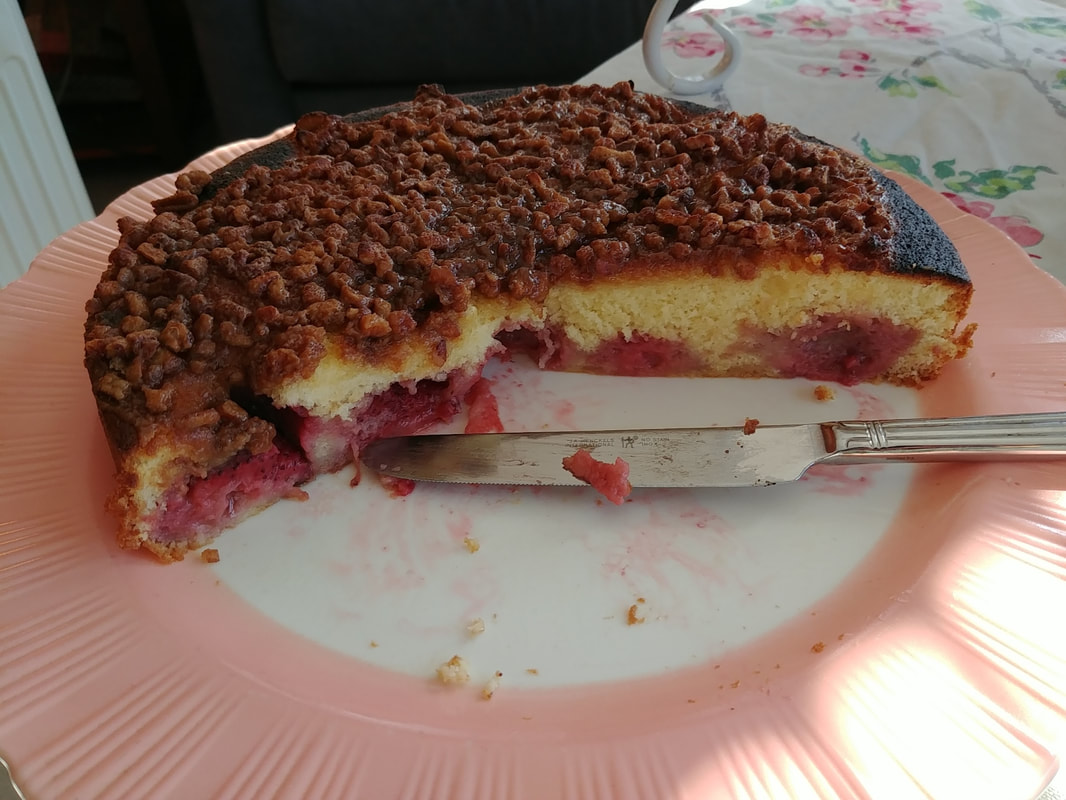
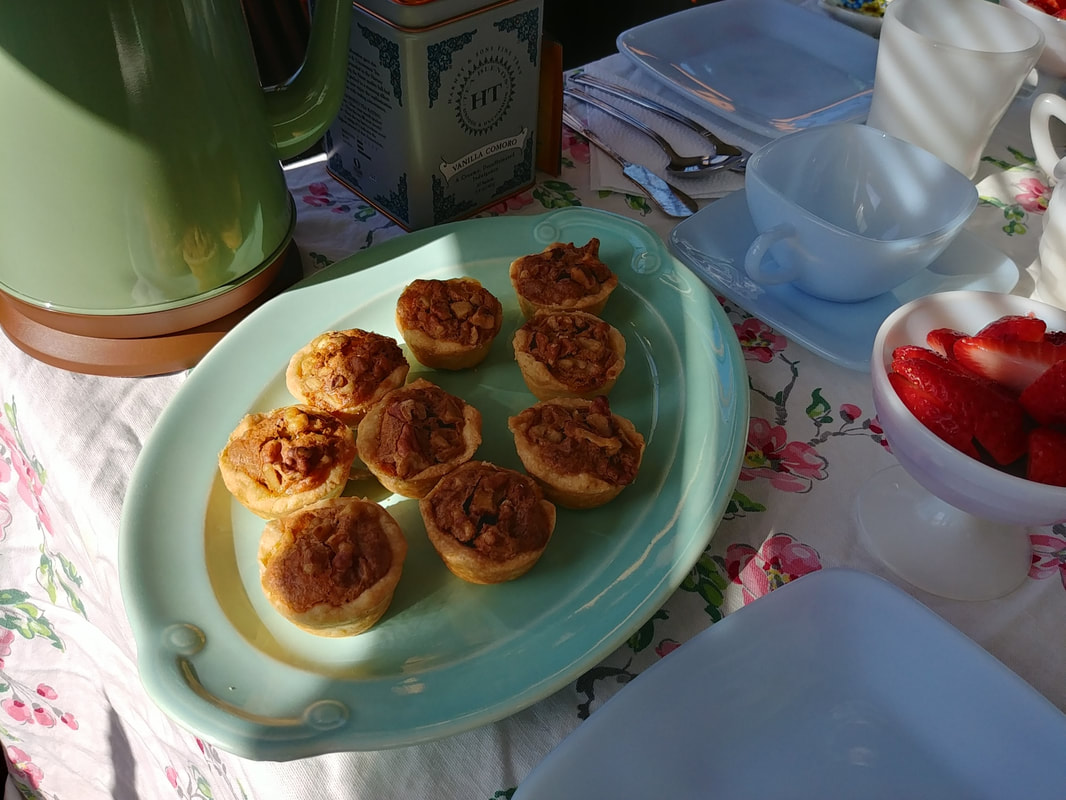

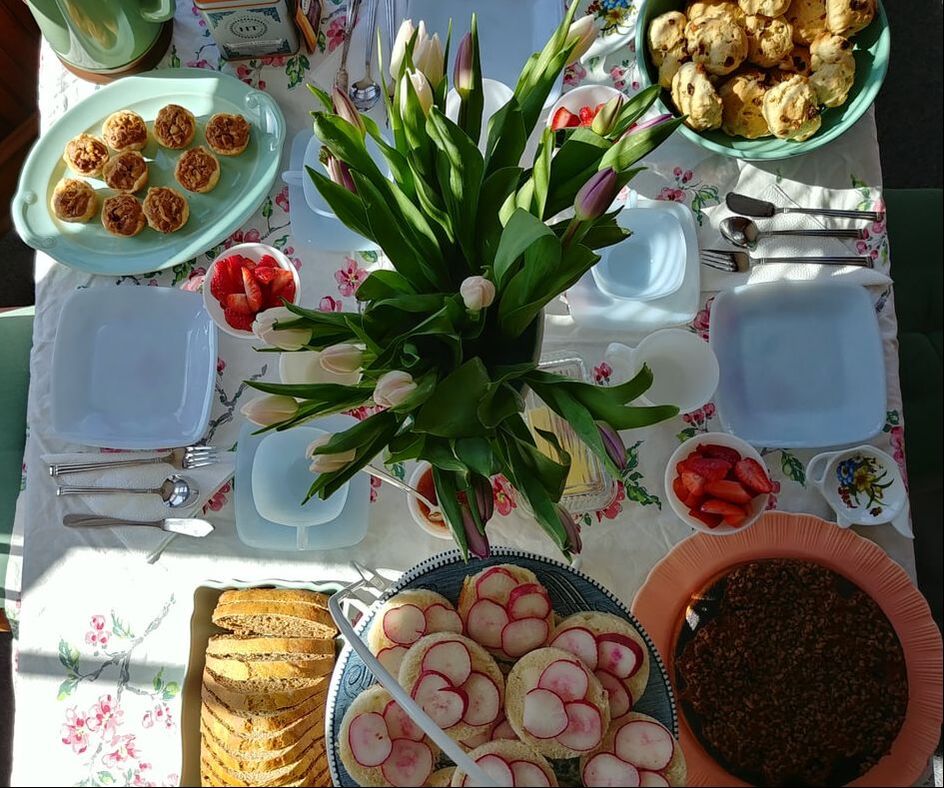
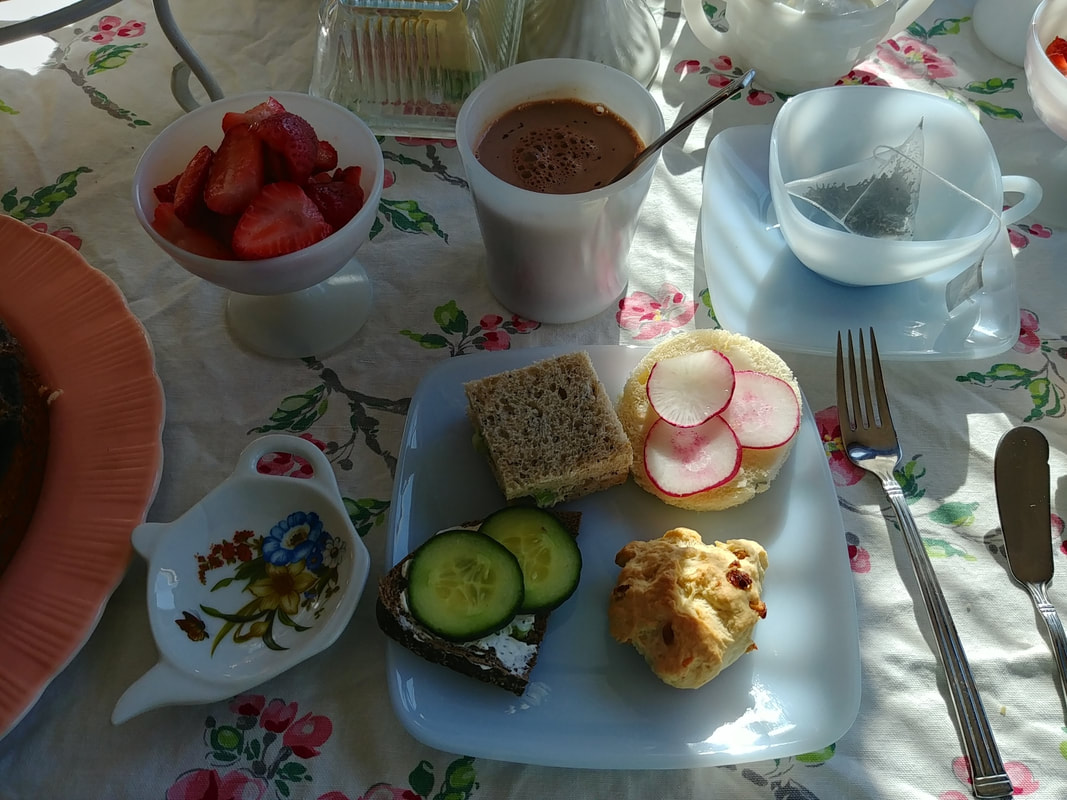
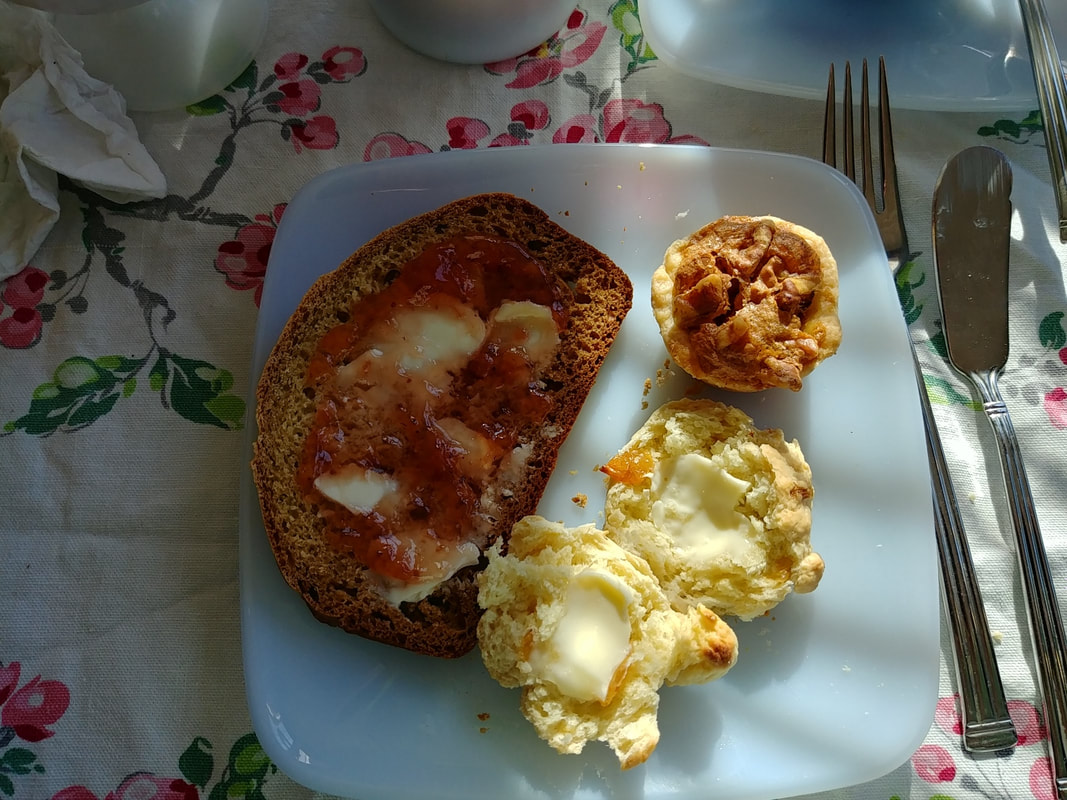
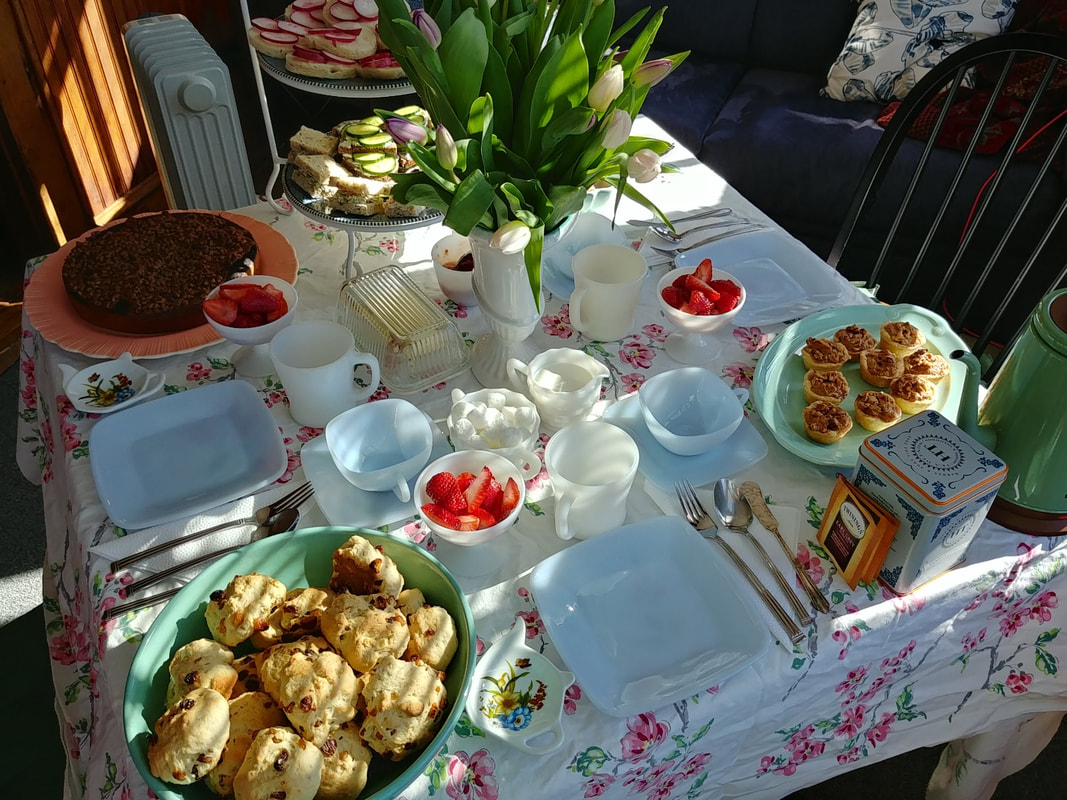


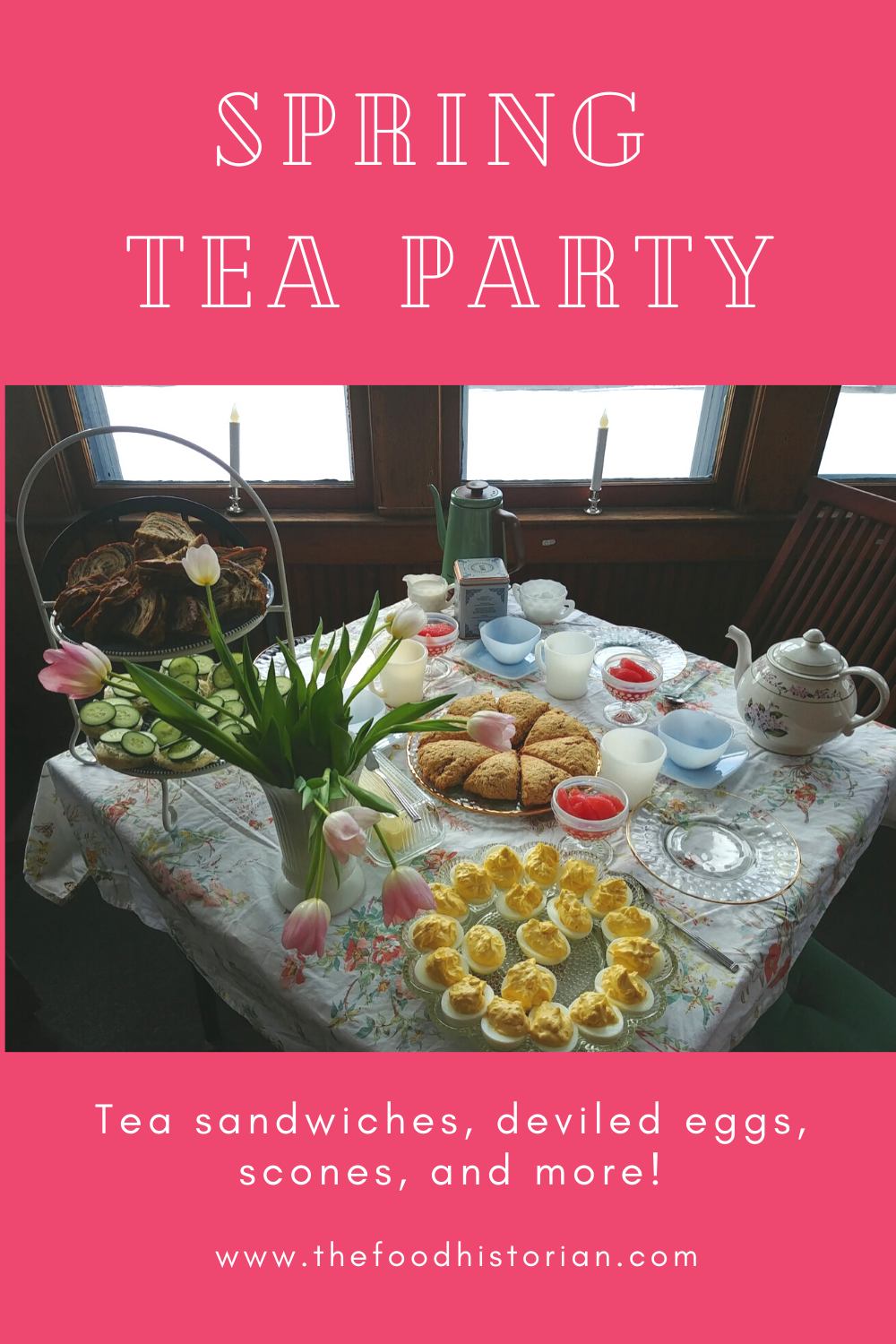
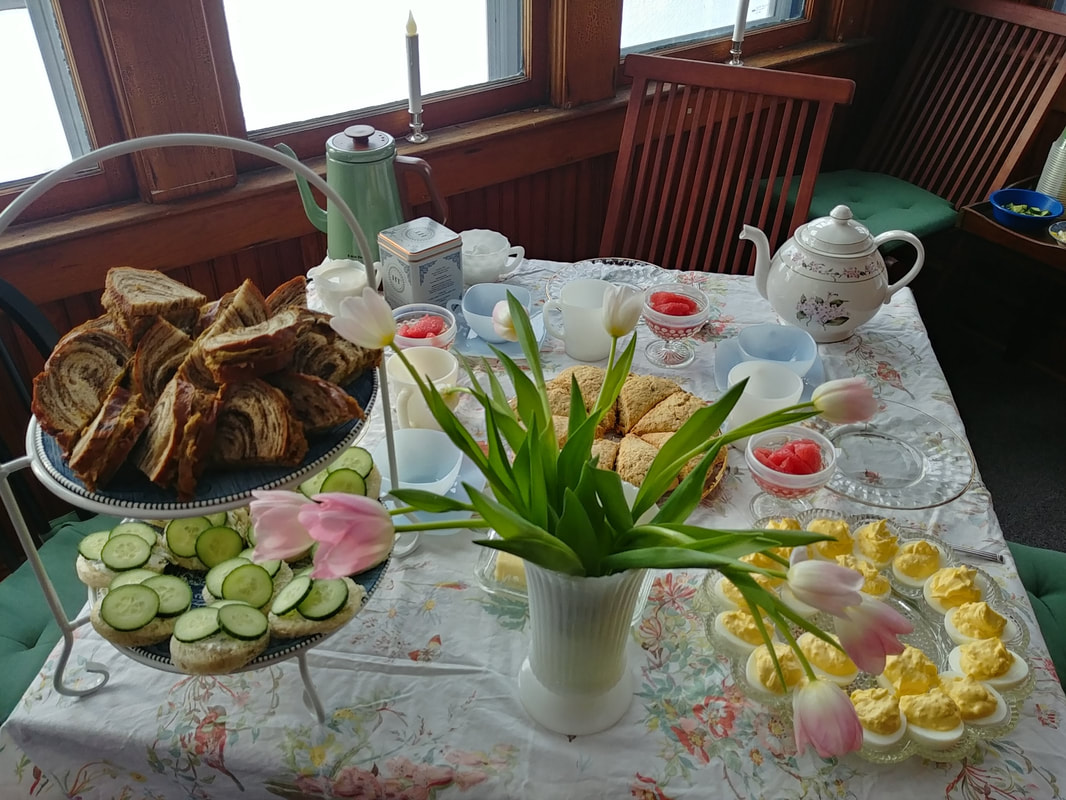
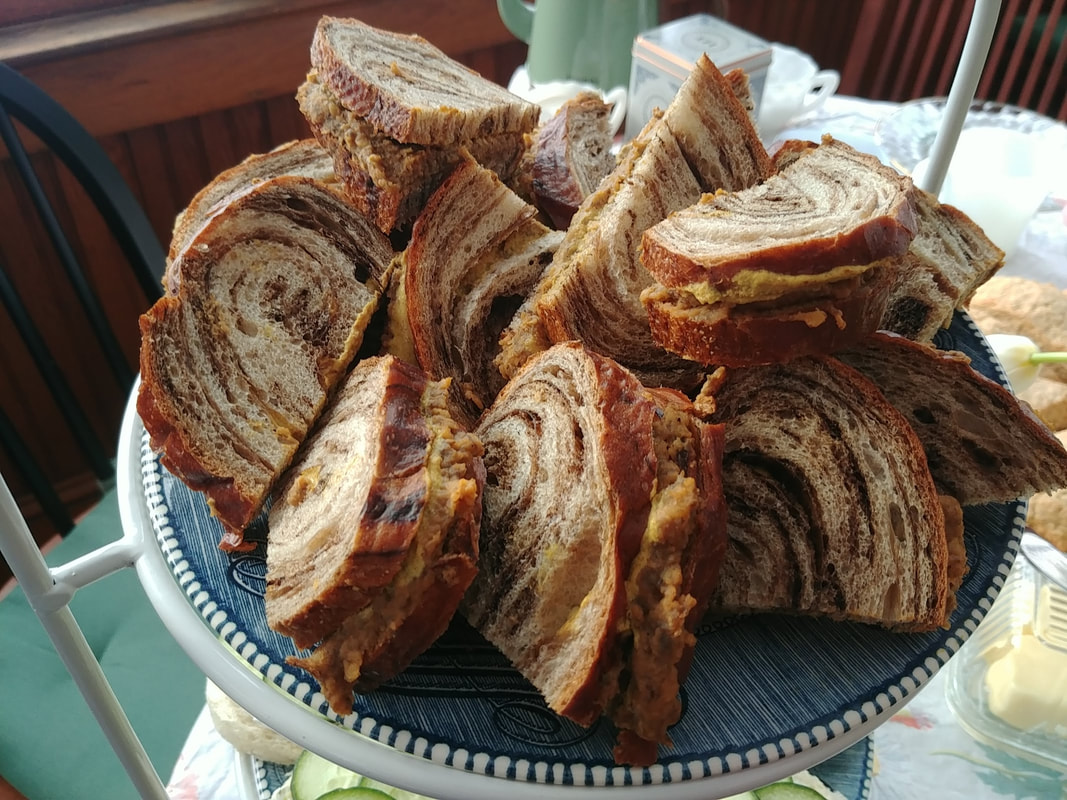
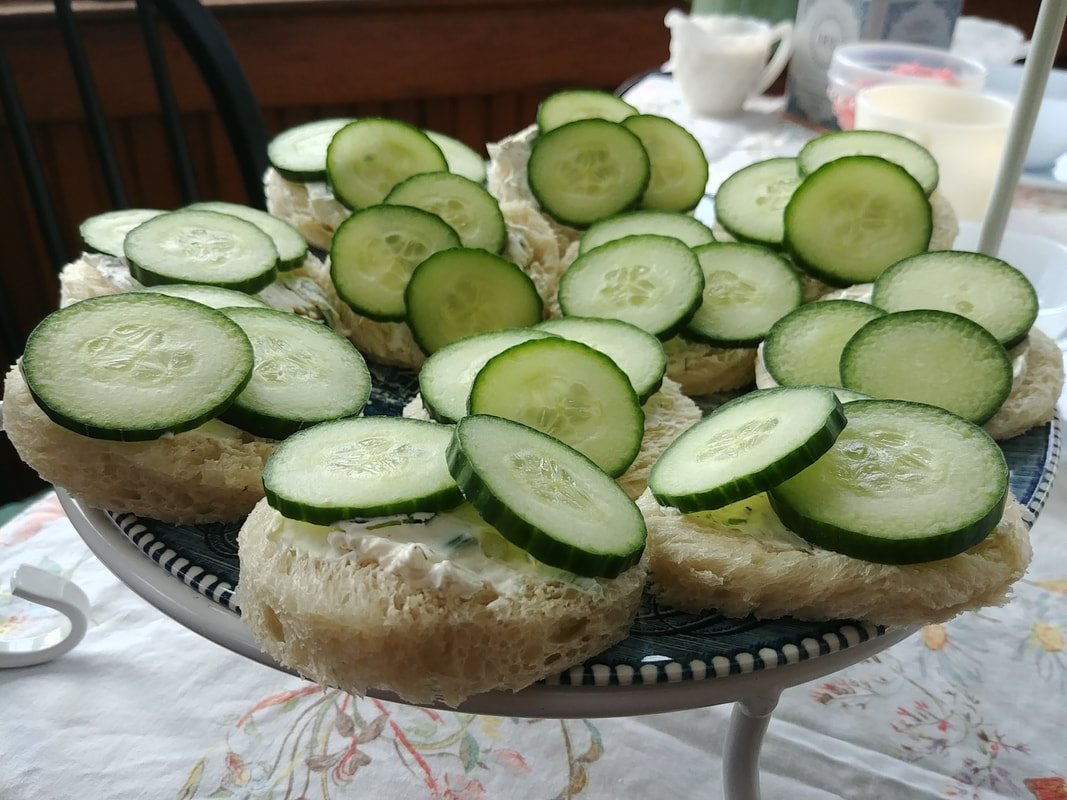
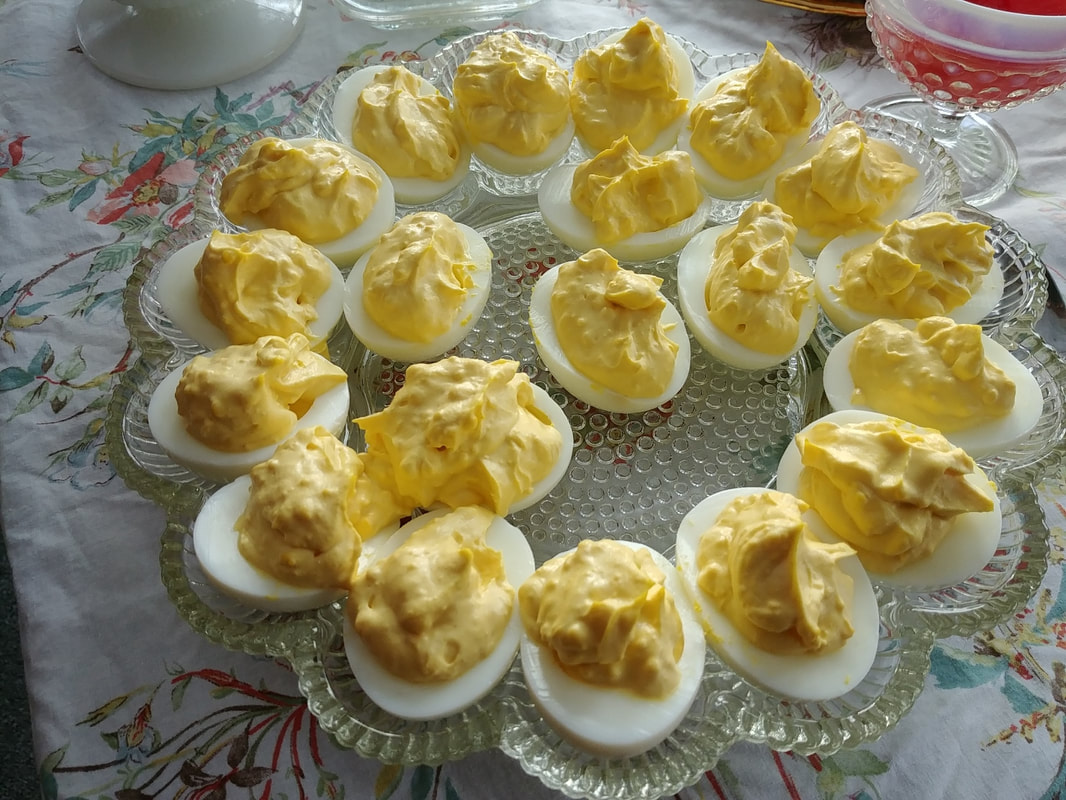
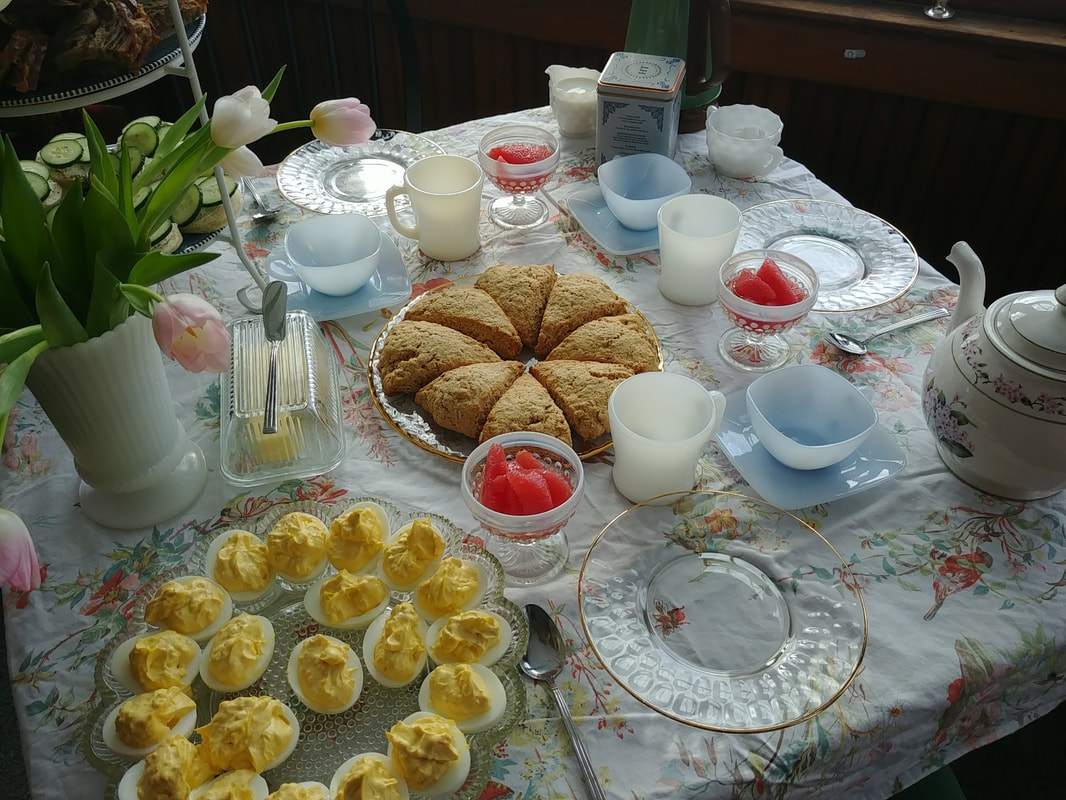




 RSS Feed
RSS Feed